

theSummit
campus THREaT

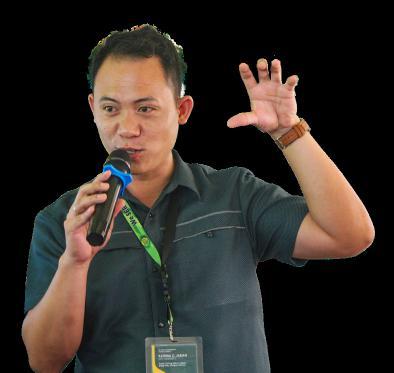


The administration of Mangagoy National High School (MNHS) has recently confirmed that five junior high school students have been involved in illegal organizations, including gangs and fraternities from other schools and neighboring communities. Investigations revealed that these students were recruited by gang members and had begun conducting secret initiation activities within the school premises. Their actions caused physical and psychological violence among their peers, raising serious concerns about student safety and discipline.
Following an in-depth investigation, Guidance Counselor Designate Nancy A. Aguilar, in coordination with the Barkada Kontra Droga (BKD) officers, revealed that the implicated students, all from regular classes were also responsible for incidents of theft, extortion and bullying within the school premises.
“They are the reason why some of our classmates transferred to private schools and why others moved to different sections last December because they kept bullying them,” said the grade 9 student.
“Ila sad mi ginaayuan ug kwarta kada lunch break unya ug dili mi mohatag kay ila mi hadlokon sumbagon sa gawas

(They would immediately threaten to punch us outside if we didn’t give),” a grade 7 student recounted.
“Nagduda sad mi nga sila ang nagakwat sa mga nawala namo nga kwrta ug cell phone sa classroom, (We strongly suspect that they were the ones who took our missing money and cell phones in the classroom.)” a grade 8 student narrated.
In response to these alarming incidents, the school principal, Dr. Teresa D. Buray, issued a memorandum instructing class advisers to summon both the parents of the involved students and the students themselves for a closed-door conference and guidance counseling.
According to the MNHS Student Handbook, participation in gangs or illegal organizations is strictly prohibited and classified as a major offense, carrying a severe sanction of expulsion. This policy applies uniformly to all students, regardless of grade level or academic program.
The policy is in adherence to Republic Act No. 7610 or the Special Protection of Children Against Abuse, Exploitation and Discrimination Act (RA 7610) which applies to acts covered by the Revised Penal Code...

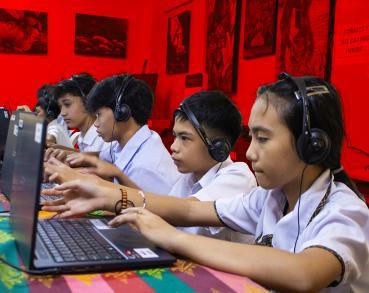
School (MNHS) has expressed deep concern over the decrease in the results of the Program for International Student Assessment (PISA) Science post-test. The post-test recorded a Mean Percentage Score (MPS) of 36.6, a notable drop from the pre-test score of 43.18, reflecting a difference of 6.58 percentage points.
PISA is an international assessment designed to evaluate the competencies of 15-year-olds in Mathematics, Science, and Reading, as this is typically the age at which students are still enrolled in formal education.
The school principal, Dr. Teresa D. Buray emphasized the importance of adhering to the Department of Education’s (DepEd) mandated measures aimed at improving the quality of education across the country. These measures include curriculum revisions, capacity-building programs for teachers, and enhanced resource allocation for school.
Dr. Buray further highlighted the need to conduct a thorough analysis of the factors contributing to the decline in performance and to implement targeted interventions to improve student outcomes. She stressed that the results should serve as a call to action for refining teaching strategies, optimizing curriculum delivery, and fostering greater student engagement to address the identified gaps.
As part of the school’s response, Dr. Buray mandated the strengthened implementation of Project Enhanced-Daily Regimen in Nurturing Knowledge (E-DRINK), a literacy and numeracy intervention program to address students’ poor academic performance. The program is expected to provide targeted support and bridge learning gaps to enhance overall competency levels.
This development underscores the critical need for sustained efforts to raise the quality of education and ensure that students are better equipped to meet international standards. MNHS remains committed to fostering academic excellence and upholding its responsibility to prepare students for global competitiveness.
CITY – As heavy rains continue to drench Mangagoy and some parts of the region, students in flood-prone areas face a daily struggle against rising waters just to get to school. For many years, the persistent flooding makes commuting nearly impossible, forcing them to skip classes and contributing to habitual absenteeism during the rainy season.
In Mangagoy, where flooding has been a persistent problem for years, residents have repeatedly called for stable flood control measures—but little has changed. In areas like Requina Extension, water from higher ground overflows into clogged canals, worsening the situation and increasing the dangers for young students trying to get an education.
Despite the P257.06 billion allocation for the Department of Public Works and Highways (DPWH) Flood Management Program this year, large-scale flooding in low-lying areas like Mangagoy remains unresolved. Frustrated by the lack of progress, Daniel Sayson Sr., president of the School Parents-Teachers Association (SPTA), is urging local officials to prioritize a sustainable flood control project near Mangagoy National High School...
2
NEWS
TOFAS ties up with DepEd to address mathematical challenges
CARRYL MAE O. IBANEZ
In response to the growing difficulties students face in mastering mathematical concepts, the Department of Education (DepEd) has partnered with the Test on Fundamental Academic Skills (TOFAS) initiative to evaluate and enhance students’ competencies in critical educational domains.
During a focused discussion held at Mangagoy National High School (MNHS) on November 12, 2024, testing coordinator Sharon Mae Plaza highlighted the benefits of TOFAS projects. She emphasized their potential to address challenging topics, helping to refine students’ academic skills and understanding.
According to the principal, Dr. Teresa D. Buray, the collaboration is anchored to Regional Memorandum No. 1069 s. 2024 issued by DepEd Caraga, which aims to systematically assess and address students’ strengths and weaknesses in specific subject areas. A key focus of the initiative is on equipping teachers with the tools to identify and target difficult topics, such as foundational mathematical operations like multiplication and division.
“These challenges have been longstanding, and TOFAS provides a structured approach to identify gaps and implement strategies that directly address these issues,” Plaza explained. She also noted that this collaboration equips educators to adapt their teaching strategies to better support students’ learning needs.
The TOFAS project is seen as a proactive response to educational challenges in the region, offering a pathway to improve not only mathematical competence but also broader academic performance. With teachers preparing to integrate TOFAS-driven strategies, the partnership promises to pave the way for a stronger and more capable student body.
IPs stage thanksgiving rituals at Tinuy-an Falls



In a profound expression of gratitude for nature’s abundance, the Indigenous Peoples (IPs) of Burbunan, Bislig City, showcased their time-honored rituals at Tinuyan Falls on September 17, 2024. This vibrant celebration, deeply rooted in the rich cultural heritage of the Manobo and Mandaya tribes, served as a highlight of Bislig City’s 25th Charter Day Celebration, organized in partnership with the City Tourism Office.
At the heart of the ceremony the Babaylans, spiritual leaders presided over the rituals. They led the ceremonial drink, performed the ritual dance, and
Academic pressure, overlapping events threaten students’ org projects
R. MABALATAN
The Supreme Secondary Learners Government (SSLG) at Mangagoy National High School (MNHS) faces challenges in sustaining its projects due to academic pressure and lap-jointed events resulting in inactivity and declining participation among its officers.
newsfrompage 1


carried out the symbolic sacrifice of the tinorlok (hog) while singing and chanting prayers. The celebration culminated in a community feast featuring local cuisines unique to the area, offering participants a taste of indigenous culinary heritage.
The event was attended by local government officials, community members, and tourists, both local and foreign, who gathered to witness the thanksgiving rituals. These practices are deeply rooted in the cultural identity of the Manobo and Mandaya tribes, serving as a form of worship and prayer to their deities for protection, abundant harvests, and the well-being of their community.
“We believe that deities residing in our ancestral forests and territories will protect us. They deserve our
obedience and respect to ensure harmony and prevent harm to our livelihoods,” stated Datu Tinuy-an, a respected tribal leader. The rituals also underscored the tribes’ commitment to preserving the natural environment surrounding Tinuy-an Falls, a vital part of their ancestral domain. Calls were made for further documentation and study of these traditional practices to deepen
Aformal turnover ceremony marked the transition of leadership at Mangagoy National High School (MNHS) as outgoing principal Dr. Teresa D. Buray entrusted the school’s administration to incoming principal Mr. Romil B. Vestudio. The event took place on December 28, 2024, at the 3rd Floor of Sheilah’s Restaurant, gathering school staff, stakeholders, and community leaders to witness this significant milestone.
MNHS family hails new leadership in handover ceremony SH enrollment dips to 5.56%; admin raises concern
The decline in Senior High School enrollment from 126 students in the 2023-2024 school year to 119 in the current 2024-2025 year has raised concerns among school officials. According to a

this decrease can be attributed to the more aggressive marketing strategies of the mushrooming private schools in Mangagoy, where students are drawn to enroll due to their modern and complete facilities. These private institutions offer free uniforms, jackets, and school supplies—benefits that the public school cannot match due to its limited budget from the Maintenance and Other Operating Expenses (MOOE).
During the recently concluded SSLG banner project presentation, Ms. Rizza Mae Coralat, SSLG adviser, along with the organization’s officers, shared insights and perspectives on the state of the organization. According to the SSLG Adviser, Miss Coralat, the inactive participation of students in SSLG projects has been attributed to academic stress, multiple divisionlevel events, and various internal challenges faced by the students. The adviser closely monitored these issues, providing officers an opportunity to express the reasons behind their limited involvement. Moreover, the organization’s foundation has experienced ongoing conflicts, which continue to threaten not only the execution of projects but also the cohesion and functionality of its leadership team.
The administration has also mandated that teachers, Supreme Student Government (SSG) officers, and members of BKD remain vigilant in identifying and preventing such activities. Students are strongly encouraged to report any recruitment attempts or suspicious activities occurring on campus.
Despite these challenges, the adviser remains optimistic about the SSLG’s future. She emphasized the importance of resilience and adaptation in ensuring the continuity of the organization’s initiatives.
“I believe that we could ensure continuity through the after-activity results (AAR), we would analyze and find how we could improve these projects and our teamwork to ensure another launch,” Carryl Mae Ibańez, SSLG president stated. The SSLG remains committed to overcoming organizational, internal, and external obstacles as it strives to maintain its role in fostering student leadership and engagement.
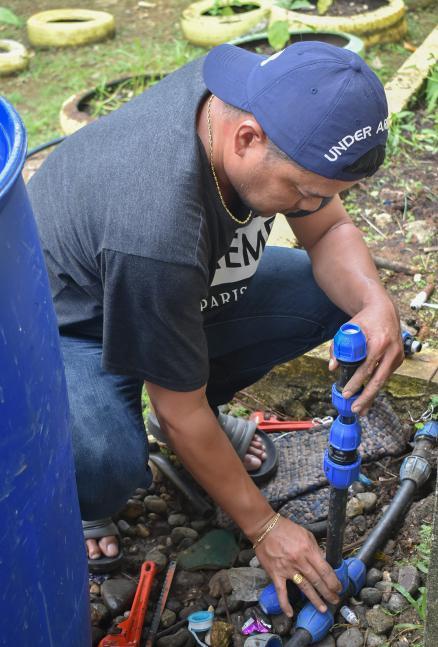
To offer students positive and constructive alternatives, the school administration urges participation in official school organizations such as the SSG, BKD, Youth for Environment in Schools Organization (YES-O) and Sports Club... These extracurricular activities aim to develop students’ talents and skills while steering them away from potentially harmful influences.
Further investigations by the guidance office are ongoing to ensure the eradication of gang-related activities and to safeguard the well-being and future of all students.
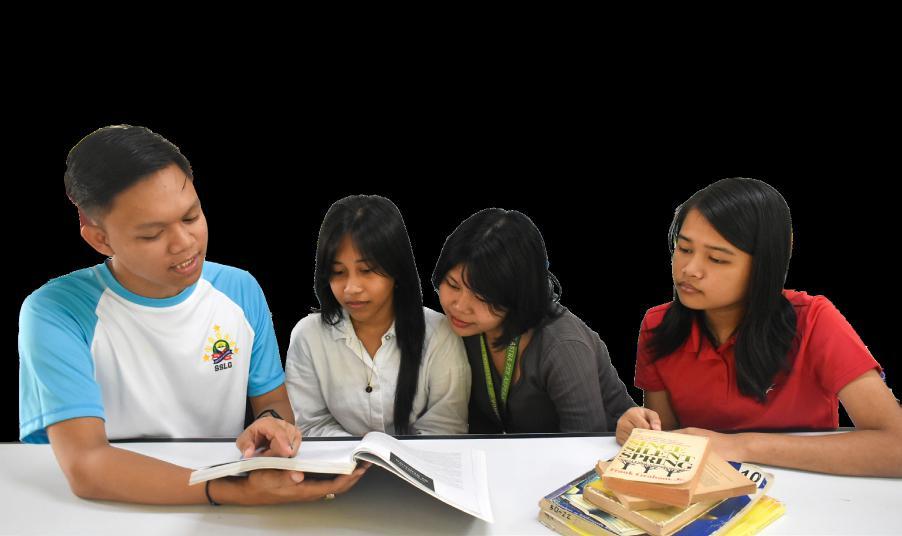
In response to the persistent challenges of poor literacy and numeracy skills among students, the Supreme Secondary Learner Government (SSLG) of Mangagoy National High School (MNHS) launched the innovative Solving Tardiness and Absenteeism through Incentives and Remediation Sessions (STAIRS) project. This initiative, introduced under the broader Activities for Civic Engagement (ACE) program, aims to uplift students’ academic performance and address fundamental learning gaps.
At the start of the school year, MNHS reported alarming rates of literacy and numeracy skills based on diagnostic tests, with proficiency levels below 50%. Determined to reverse this trend, the SSLG designed STAIRS to provide targeted interventions through incentive-based remediation sessions, fostering both motivation and academic improvement.
School water system dispute escalates, prompting reconnection with BCWD
Toaddress the ongoing dispute over water usage between the school and the Cauntuan community, the school administration reestablished its water supply connection with the Bislig City Water District (BCWD) on January 8.
The disagreement arose from a conflict between the School ParentsTeachers Association (SPTA) and the officials of the Cauntuan community regarding the limited water flow.
The community proposed exclusive access to the water supply during the entire night and from 8:00 AM to 1:00 PM, restricting the school’s usage only in the afternoon.
“The school requires a greater supply of water during the day to support its operations; therefore, both the school and the Cauntuan community must have equitable access to this resource,” former SPTA President Roberto Aguaviva emphasized during their discussion. To resolve the misunderstanding and prevent further conflict, the
previous school administration decided to reconnect to the BCWD, securing a stable and independent water source for the institution.
“We are deeply grateful to our SPTA for generously covering the cost of reconnecting our water system. This initiative has provided us with a dedicated water supply to meet the school’s needs, particularly for cleaning our restrooms and watering the plants,” expressed Mr. Romil B. Vestudio, the newly installed principal. The teachers were greatly relieved when the water supply shortage was finally resolved, providing sufficient resources for cleaning their classrooms and ensuring the personal hygiene of the students.
The project has already shown remarkable results. Last year, illiteracy rates were eradicated among participating students, marking a significant milestone for the school. Numeracy challenges, while more persistent, have seen measurable improvements, thanks to the structured support provided by the initiative.
SSLG Adviser Ms. Rizza Mae L. Coralat expressed optimism for continued progress this school year. “We are excited to evaluate the results through after-activity assessments at the end of this academic year,” she said. The SSLG’s proactive approach demonstrates the power of student-led initiatives in addressing critical educational challenges, paving the way for a brighter academic future at MNHS.
bythenumbers
newsfrompage1
In response, the City Planning and Development Office (CPDO) has intensified efforts to refine and implement a drainage master plan aimed at improving stormwater management and mitigating flood risks across Bislig.
City officials have also identified several flood-prone communities—including Tabon, Bonggaitan, Comawas, and Sugubon—where residents frequently deal with submerged streets, damaged homes, and disrupted livelihoods every time heavy rains hit.
“We are currently strategizing the deployment of a control tank as part of our drainage master plan to help alleviate the flooding in these affected areas,” said Engr. Edilberto G. Carmen, CPDO coordinator.
While these initiatives signal progress, many residents remain skeptical, hoping that real, lasting solutions will finally be put in place before another rainy season brings the same old struggles.





DAVID RJ DE LOS
JANINE P. POLINA
EDISON A. GAMBOA
CARRYL MAE O. IBAÑEZ
WENDEL
CRYSTAL FLOW. Bislig
Photo by: Brenth Daryll P. Mozo
newsbits:
Student body assists literacy, numeracy intervention through STAIRS Initiative
DAVID RJ DE LOS SANTOS
EMPOWER. Student leader Markjason R. Agravante conducts a literacy tutorial, equipping learners with essential skills to excel in PISA and beyond.
Photo by: Brenth Daryll P. Mozo
BRENTH DARYLL P. MOZO

Self-rated poverty among MNHS parents rises to 78%, survey says
Alumni reignite homecoming tradition to support Alma Mater
Aftera four-year hiatus, the school’s alumni united to revitalize their association and reaffirm support for their Alma Mater. Their efforts culminated in a donation on January 18, 2025, of one smart TV, 20 mono-block chairs, and four CTX rectangular folding tables for the Special Program in Journalism (SPJ) room, reflecting their enduring commitment to the school.
“It is with great pleasure that we extend our support to our school, nurturing a culture of excellence. This is our way of giving back for the guidance and education that shaped us into who we are today,” alumni treasurer, PCPT Welvor B. Ilaygan said.
Before the event realized, Dr. Teresa D. Buray, the school principal, led the initiative to revive the Alumni Homecoming as part of her legacy before retirement. The process faced challenges, including disrupted collaboration among batches, financial constraints, and the inexperience of the host batch.
Despite these hurdles, the alumni, led by coordinator Nathaniel P. Diaz and Alumni Association officers, successfully rallied support. In just one week, they mobilized resources, with significant contributions from alumni abroad, enabling the event to proceed.
The grand homecoming on December 28, 2024, brought together Alumni Batches 2003 to 2024, the school administration, faculty, staff, and sponsors. This milestone event reinvigorated the tradition of fostering alumni connections and celebrating shared memories.
ToTaL soLidaRiTy
newsbit:
Students decry zero budget for PhilHealth - survey
Asweeping decision to cut PhilHealth’s government subsidy to zero has sparked widespread disapproval, with 92% of indigent students at Mangagoy National High School opposing the move. Approved by the Bicameral Conference Committee on the national budget, the controversial budget cut raises concerns about the government’s commitment to upholding Filipinos’ constitutional right to health. They argue that defunding the insurance agency without viable alternatives will only worsen their burden to health care expenses as majority of them are indigents and has no capability to pay hospital bills. Moreover, their elderly relatives, including senior citizens and persons with disabilities who rely on the subsidy, now face the threat of losing access to free healthcare services.
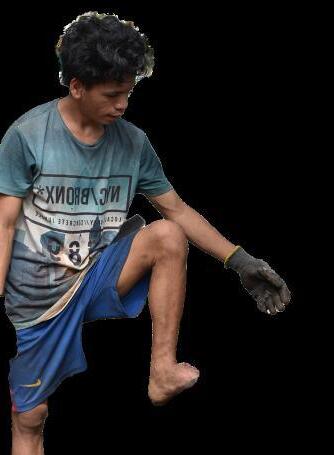
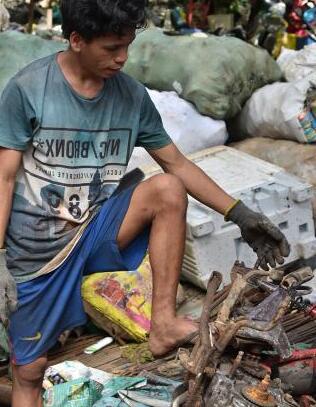
MANGAGOY,
Bislig City – The proportion of parents at Mangagoy National High School (MNHS) who perceived themselves as poor surged to 78% in January 2025, marking an 11-percentage-point increase from the 67% recorded in October 2024, according to the latest survey conducted by LFS Pulse.
The findings, based on a survey conducted during the parents’ general assembly on January 17, 2025, revealed that 78% of MNHS families classified themselves as poor, 17% identified as borderline (neither poor nor non-poor), and only 5% rated themselves as not poor.
This 78% self-rated poverty level is the highest recorded by LFS Pulse since October 2024, when the figure stood at 67%. The January 2025 survey utilized face-to-face interviews with 105 parents and guardians who attended the School Parents and Teachers Association (SPTA) assembly meeting.
Economic challenges cited as major factors
Parents who identified as poor cited unemployment and persistently high inflation rates—particularly for basic commodities such as rice—as the primary causes of their financial struggles. Many respondents reported severe challenges in meeting daily needs, including an inability to afford three meals a day. These economic hardships extend to difficulties in providing school supplies, uniforms, transportation, and allowances for their children.
Correlation with national trends
The LFS survey findings align with the national self-rated poverty data reported by the Social Weather Stations (SWS). The SWS survey conducted in December 2024 indicated that 63% of Filipino households rated themselves as poor, an increase of 4 percentage points from the September 2024 figure.
SPTA president Mr. Daniel Sayson stated that the rising poverty levels among MNHS parents underscore the pervasive economic challenges faced by families, particularly in rural areas, amid ongoing inflationary pressures and limited employment opportunities.
TheParent-Teacher Association (SPTA) of Mangagoy National High School demonstrated unwavering support for their students during the Tinuy-an Dance Festival Competition, despite challenges stemming from controversies over the hired trainer’s dual commitment to another festival. These divided responsibilities led to insufficient rehearsal time, impacting the students’ preparation.
The school secured a commendable third-place finish, though the outcome elicited mixed reactions from parents. Several expressed disappointment, citing a lack of mastery in the students’ performance. Concerns were primarily directed at the trainer, whose frequent absences—due to commitments at another festival in Surigao City hindered the students’ readiness.
“The trainer’s divided focus during rehearsals significantly affected the students’ preparation. Considering the talent fee we paid, we expected better guidance and support,” remarked SPTA President, Mr. Daniel Sayson.
Despite these issues, the school administration expressed gratitude to parents and students for their dedication and resilience. Dr. Teresa D. Buray, the school principal, commended the dancers and musicians for their perseverance in achieving a top-three finish in such a competitive event.

“It’s no easy feat to compete at this level. Achieving a top-three spot requires tremendous time, effort, and resources,” Dr. Buray stated. “We are incredibly proud of our students for their commitment and hard work, and we deeply appreciate the support of our parents.”
The principal also underscored the broader significance of the school’s participation, emphasizing that it extended beyond the competition itself. “Our involvement in the Tinuy-an Dance Festival reflects our dedication to promoting and celebrating Bisliganon culture and tradition. This experience fosters unity and pride in our heritage,” she added.
While challenges arose during this year’s competition, the school’s journey highlighted the enduring values of perseverance, teamwork, and the shared celebration of Bisliganon identity.
PARENTS OPPOSE THE ADOPTION OF KHAN ACADEMY DUE TO DIGITAL DIVIDE WITHIN MANGAGOY NATIONAL HIGH SCHOOL
Source: Learners Formation Section (LFS)
Parents oppose adoption of Khan Academy
School urges parents to attend orientation SPTA supports school’s Tinuy-an Festival entry amid controversies
Given that 80 percent of students lack access to gadgets and internet connectivity at home, parents have expressed opposition to the implementation of Khan Academy at the school. In response, the school pushed the parents to attend Khan Academy Orientation on January 18, 2025.
During the orientation, resource speakers from Khan Academy explained that the platform offers free, high-quality learning resources, including video lessons, exercises, and quizzes across a broad spectrum of subjects. These resources cater to learners of all ages, from primary school to university level, covering subjects such as mathematics, science, history, economics, and computer programming.
Parents were also informed that they could create a free Khan Academy account linked to their child’s account. This would allow them to monitor their child’s progress, track the subjects being studied, and access detailed reports. Additionally, the platform’s dashboard enables parents to track metrics such as time spent, skills practiced, mastery levels, and areas requiring further attention.
Surveys indicate that 66% of students view their parents or guardians as their primary source of support in their academic journey, which can
significantly enhance their skills. The collaboration between teachers and parents is crucial for improving student outcomes, such as grades, test scores, and attendance, as well as fostering better self-esteem and discipline. Furthermore, such collaboration can reduce the need for special education and remedial classes, leading to overall academic improvement, irrespective of socioeconomic or ethnic background.
School principal, Romil B. Vestudio reassured parents that the school provides adequate gadgets and stable internet connectivity to facilitate effective access to Khan Academy lessons. Students are allocated 30 minutes during their school day to engage with the platform’s lessons, with additional time available during lunch breaks or after school for assignments.
As a result of the orientation, 90% of attending parents expressed support for the implementation of Khan Academy in the school.
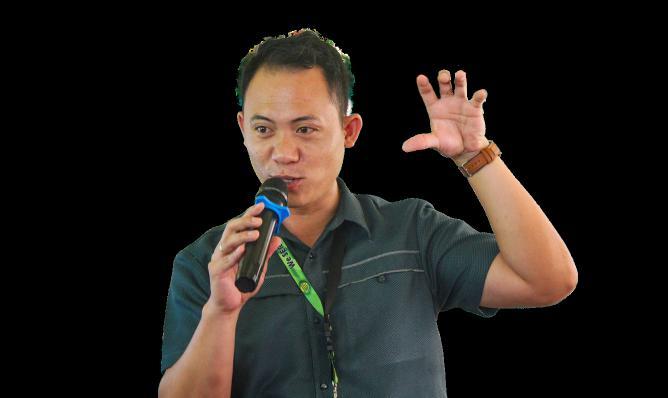
SURSECO-1 targets illegal electrical jumpers to reduce costs, hazards
Surigao del Sur I Electric Cooperative, Inc. (SURSECO-1) takes steps to combat illegal electrical jumpers in an effort to mitigate rising electricity costs and improve safety.
The school community has pledged its support by encouraging members to report illegal jumpers to authorities, helping to address a problem that not only increases electricity bills but also endangers lives.
Illegal electrical connections have been linked to severe injuries and fatalities, particularly when individuals inadvertently come into contact with live wires. Additionally, the issue contributes to the proliferation of “spaghetti wires” — a tangled mess of cables hanging precariously from electric poles. These wires pose significant risks to both infrastructure and public safety.
The problem is further
exacerbated by telecommunication companies that illegally attach their wires near live electrical lines. This practice has not only resulted in accidents but has also endangered the lives of individuals attempting to set up illegal connections.
To curb these activities, SURSECO-1 has implemented strict monitoring measures. Offenders caught illegally tapping into power supplies now face a fine of Php 2,000. The cooperative continues to urge communities to remain vigilant and report such activities, emphasizing the importance of collective action in reducing costs, preventing accidents, and ensuring a safer environment for everyone.
DOH revives Bakuna-Eskwela

The Department of Health Bislig brought back the School-based Immunization Program dubbed as Bakuna Eskwela at Mangagoy National High School to provide MR-TD vaccines that serve as a supplemental immunization to Grade 7 students.

DAVID RJ DE LOS SANTOS
BRENTH DARYLL P. MOZO
PRECIOUS MARY B. SUPERIO
CARRYL MAE O. IBAÑEZ
AARON M. FERNANDEZ
SAMASHI MAELKITH S. JABAGAT
DONNA CLAIRE B. CABILLAS
EDISON A. GAMBOA
SAVE THE BILL. SURSECO personnel urges members to report illegal jumpers to ensure safety and reduce electricity costs during the mini-press conference held on November 15, 2024.
Photo by: Precious Mary B. Superio
2
NEWS

We must safeguard our country from becoming the next LA— because prevention saves lives, protects property, and secures a safer future for all.
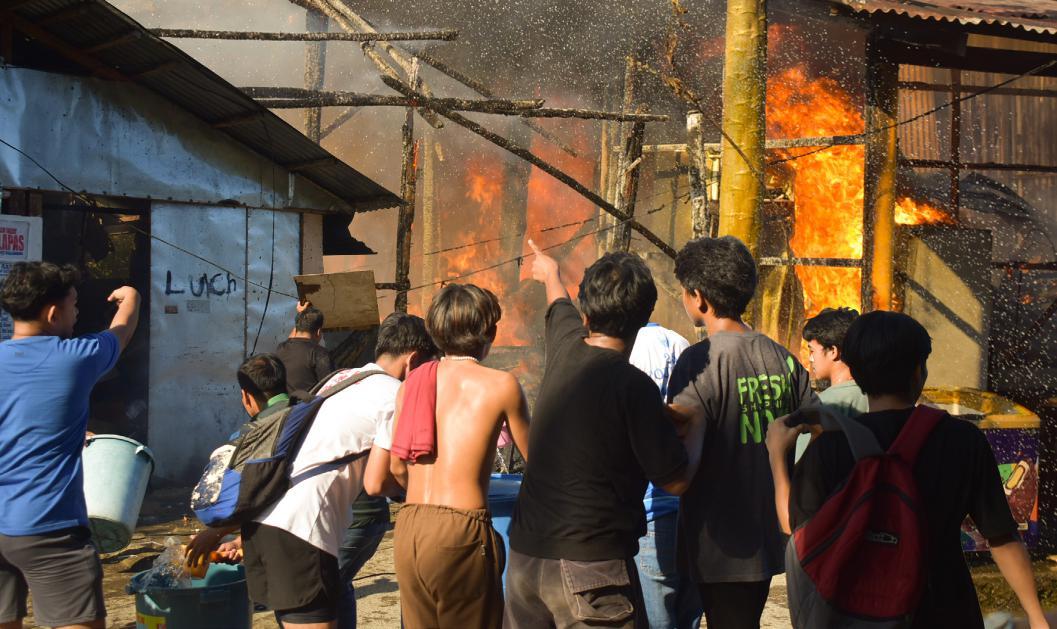
Fire engulfs two houses, classes disrupted
Araging fire destroyed two homes in Purok 4, Cauntuan, Panaghiusa District, Mangagoy, Bislig City, on November 29, 2024, causing major disruptions at Mangagoy National High School (MNHS).
According to Bureau of Fire Officer Leonel Agapay, the fire started when a neighbor burned garbage in a backyard and left it unattended. Strong winds carried the flames to the home of Rolando Macan, a tricycle driver, before spreading to another house. The estimated damage amounts to ₱58,000.
The blaze broke out just 50 meters from MNHS, triggering panic and forcing students, teachers, and staff to evacuate. Some assisted in controlling the fire while awaiting firefighters.
The affected families have sought temporary shelter with relatives as authorities continue their investigation.
“We were in the middle of a Science lesson when we heard screams warning of a nearby fire,” shared Christian P. Carbo, a Grade 11 student. “We rushed out and saw thick smoke and flames just across from us.”
Senior High teacher Nathaniel P. Diaz emphasized the school’s priority during the emergency. “We prioritized everyone’s safety, especially the students. They were understandably panicked, so we tried to remain calm for their sake.”
In response to the students’ distress, the School Disaster Risk Reduction and Management Council (SDRRMC) conducted a fire drill to provide safety tips on what to do during and after a
PRC Annual Camp, 1st Aid Olympics tainted by politics
fire. Additionally, the school organized a mental health debriefing session to help students cope with the stressful experience.
“We must have presence of mind in unexpected situations so we can think of the best way to safeguard ourselves and our important belongings,” advised Mrs. Victoria G. Salva, the School Guidance designate.
The school principal, Dr. Teresa D. Buray, urged the community near the school to exercise extreme caution in preventing fire hazards. She emphasized that if a fire were to reach the school, it would put the lives of hundreds of students, teachers, and non-teaching personnel at risk, as well as cause significant damage to school property.

The 3rd Annual Camp of the Philippine Red Cross and First Aid Olympics of Surigao del Sur, became entangled in politics when several politicians, including Senator Imee Marcos attended. The event, which saw a large turnout of people. Many of whom were not official participants—was crowded due to the expectation that attending politicians would distribute aids.
The four-day camp, themed “Lead, Save, Shine,” took place at Mangagoy Central Elementary School in Barangay Mangagoy, Bislig City, drawing 1,300 volunteers, including teacher-advisers, from 70 schools across the province. However, the speeches of both local and national politicians diverted attention from the event’s purpose. Their addresses consumed considerable time, detracting from the activities that had been carefully planned.
“We didn’t expect this overwhelming number of attendees, especially after the 2nd Youth Camp in Tandag City, which was held before the pandemic,” said a staff member from the Philippine Red Cross Surigao del Sur Chapter.
Despite this distraction, the camp’s program succeeded in fostering leadership, humanitarian education, and life-saving skills among the youth.
Participants also competed in the First Aid Olympics, showcasing their
emergency response and first aid abilities.
“This camp has empowered us to be catalysts of change in our schools and communities,” commented Neveah Jestell Geńorga, a Grade 12 participant.
The success of this year’s camp marks a significant milestone for the Philippine Red Cross Surigao del Sur Chapter, reinforcing its dedication to developing youth leaders and promoting volunteerism throughout the province.
Bislig’s mangrove forests face threat of depletion
CITY, Surigao del Sur – To address the alarming degradation of local mangrove forests in Bislig City, the Youth for Environment in Schools Organization (YES-O) of Mangagoy National High School has spearheaded a mangrove planting initiative in the coastal barangays of Caguyao and Tumanan on January 26 this year.
The mangrove ecosystems in these areas have been severely affected by illegal activities, particularly the cutting of mangroves for firewood and other uses. This destruction threatens the local marine species that rely on the mangroves for breeding grounds, which could disrupt the local fisheries and marine biodiversity. In addition, the loss of these protective natural barriers increases the vulnerability of the community to natural disasters, such as typhoons, storm surges, and tsunamis.
The YES-O officers,
SPACE CONGESTED.

LGU declines funding for CHO’s vaccination programs
When the City Health Office (CHO) visited Mangagoy National High School (MNHS) on November 6, 2024, they discussed their ongoing struggle to secure sufficient funding for free vaccination drives, which currently lack full financial support from the local government.
In an interview, CHO nurse Cherryl Rivera highlighted the significant challenges posed by inadequate funding, emphasizing the financial burden the office faces in covering the costs of their health initiatives.
Programs like the School-Based Immunization (SBI) are typically funded by both the Department of Health (DOH) and the city government. However, CHO nurses have expressed concerns over the high expenses associated with these programs, which strain the office’s limited budget.
As funding continues to dwindle, the CHO has been forced to scale back planned projects and activities, including vaccination drives for public and selected private schools. The government, citing healthcare as one
Youth
of the most costly sectors to fund, has offered limited financial assistance, leaving the CHO to contend with substantial budget shortfalls. Vaccines, in particular, represent a significant financial burden. A single vial, typically sufficient to immunize 10 children, is costly, making even smallscale school vaccination programs expensive for the CHO to sustain. The CHO has repeatedly appealed to the Bislig City government for additional funding to support their planned activities, but as of now, no response has been provided. Despite these setbacks, the CHO remains committed to advocating for the resources needed to deliver essential health services to the community.
passivity imperils barangay projects, warns SK Chair
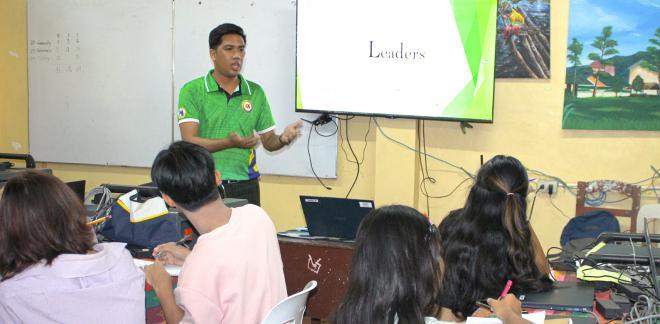
Thewaning participation of youth in barangay projects and activities is jeopardizing their success, according to Noel L. Baldomero, Sanguniang Kabataan (SK) Chairman of Barangay Mangagoy. Baldomero raised this concern during a press briefing on November 8, 2024, where he presented a detailed overview of recent SK-supported initiatives and engaged with campus journalists. Baldomero highlighted that only 30% of the barangay’s estimated 6,000 youth actively participate in SK projects, attributing the decline to the preoccupation of many young people with social media and mobile devices.
“This issue threatens the success of our projects and limits their impact,” he said, underscoring the need for innovative strategies to address this challenge.
Despite the difficulties, the SK Chair shared recent efforts to revitalize youth involvement. Creative measures such as raffle draws and other incentives have been introduced during activities to encourage attendance. “These contests not only attract the youth but also engage their parents and companions, fostering broader community support,” Baldomero explained. The SK’s proactive approach appears to be yielding results, with slight improvements in participation rates in recent months. Baldomero expressed optimism that these initiatives could help reignite interest and ensure the long-term success of SK programs, ultimately fostering a stronger, more united community.
The Learner Information Section (LFS) of Mangagoy National High School pledged its support for sports activities, anti-drug initiatives, disaster management efforts, and community outreach programs.
with the support of local officials from Caguyao and Tumanan, have launched this effort to replant mangrove saplings and restore the vital coastal ecosystem. The officers collaborated with the barangay officials, who helped in securing the necessary materials, including tongke (mangrove seedlings), and guided the youth volunteers to the planting areas.

“This project is a vital step in ensuring the long-term health and safety of our coastal communities,” said Samashi Jabagat, a spokesperson for YES-O. “Mangroves not only
provide essential breeding grounds for marine life but also act as natural barriers against extreme weather conditions. Restoring these ecosystems will help mitigate the impacts of climate change and safeguard the future of the residents here.”
Local residents expressed their support for the initiative, recognizing the importance of mangrove protection in ensuring both environmental and public safety. The initiative will continue as part of YES-O’s ongoing commitment to environmental preservation and disaster preparedness.
4 ou T of10
YOUTH PARTICIPATES IN EVERY SANGGUNIANG KABATAAN (SK) ACTIVITIES WITHIN MANGAGOY BISLIG CITY.
Source: Noel L. Baldomero
Bislig City Jail faces overcrowding crisis, seeks gov’t support
TheBureau of Jail Management and Penology (BJMP) is struggling to manage severe overcrowding at the city jail, worsened by a high rate of recidivism among released offenders. With over 50 Persons Deprived of Liberty (PDLs) recently re-incarcerated, the need for additional resources and increased recruitment of jail officers has become
capacity of 80. The overcrowding issue is compounded by inadequate segregation, forcing both high-risk and low-risk detainees to share the same space. To address potential safety concerns arising from overcrowding, the BJMP has implemented an Integrated Management System. This includes regular dry runs of emergency protocols to ensure preparedness for riots or jailbreaks.
houses 134 PDLs, far exceeding its ideal
Serna noted that the last significant effort to address jail congestion was during the
administration of former President Rodrigo Roa Duterte, when two additional buildings were constructed in 2016. However, no further infrastructure has been added under the current administration, leaving the facility under strain. Despite these challenges, the BJMP operates with an annual budget allocation of Php 300,000 only, which is used to cover basic expenses such as food and supplies.
ebruary 1,
– A growing concern has emerged in
attendance for the daily flag ceremony continues to decline, with many students arriving late or skipping the event altogether. The trend has raised alarms among school teachers. In response to this, the school has revived Project Bandila, an initiative designed to restore respect and love for the country by encouraging students to participate actively in the
aimed to foster a deeper appreciation of the nation’s rich heritage among students.
HELPING HANDS. Teachers and students work together to extinguish a fire engulfing houses in Purok 4, Cauntuan, Panaghiusa District, Mangagoy, Bislig City.
Photo by: Daniela Jacinth C. Cruz
CARRYL MAE O. IBAÑEZ
PRECIOUS MARY B. SUPERIO
BRENTH DARYLL P. MOZO
LEAD, ENGAGE, INSPIRE. SK Chairman Noel L. Baldomero urges students to actively participate in youth civic programs, activities, and projects during a mini-press conference on November 20, 2024.
Photo by: Precious Mary B. Superio
WENDEL R. MABALATAN
DAVID RJ DE LOS SANTOS
CARRYL MAE O. IBANEZ
SAMASHI MAELKITH S. JABAGAT
Jail Officer III Brondilyn P. Serna highlights on the alarming overcrowding of inmates at Bislig City Jail during a mini-press conference at Mangagoy National High School on November 27, 2025.
Photo by: Brenth Daryll P. Mozo


Editorial Board
2024-2025
BRENTH DARYLL P. MOZO EDITOR-IN-CHIEF, GRAPHIC DESIGN AND LAYOUT EDITOR, PHOTOJOURNALIST AND SPORTS EDITOR
EDISON A. GAMBOA
ASSOCIATE EDITOR, GRAPHIC DESIGN AND LAYOUT EDITOR, AND FEATURE EDITOR
SAMASHI MAELKITH S. JABAGAT MANAGING EDITOR
DAVID RJ DE LOS SANTOS CIRCULATION MANAGER
CARRYL MAE O. IBANEZ NEWS EDITOR
SAMASHI MAELKITH S. JABAGAT EDITORIAL EDITOR
JANINE P. POLINA FEATURE EDITOR
AARON M. FERNANDEZ SCI-TECH EDITOR
WENDEL R. MABALATAN SPORTS EDITOR
PRECIOUS MARY B. SUPERIO
DANIELLA JACINTH C. CRUZ PHOTOJOURNALISTS
DONNA CLAIRE B. CABILLAS CARTOONIST
GENEROSA A. TOLENTINO SCHOOL PAPER ADVISER
MARWEN C. GUIAS CONSULTANT
ROMIL B. VESTUDIO SCHOOL PRINCIPAL-I
ROLAN R. UGMAD PSDS
GLORIAN B. EDEROSAS, PHD CONSULTANT / ASDS
GEMMA A. DE PAZ SCHOOLS DIVISION SUPERINTENDENT
DISCLAIMER
The views and opinions expressed by The Summit Editorial Board do not necessarily reflect the views and opinions of those in the asministration of Mangagoy National High School. Any content provided by our writers are of their opinion and are not intended to malign any religion, ethnic group, club, organization, company, individual or anyone or anything.
ALL RIGHTS RESERVED 2025
No portion of this school paper may be utilized or reproduced without consent from the publication and its staff.
Bridging urgent educational reform DIGITAL DIVIDE
The alarming decline scores of the Junior High students of Mangagoy National High School in the recent Program for International Student Assessment (PISA) in Science is more than just a statistical drop, it is a stark reflection of the deepening crisis in public education. From a pre-test Mean Percentage Score (MPS) of 43.18 to just 36.60, this downward trend is not solely a measure of student performance but a symptom of systemic deficiencies that hinder learning. The government must urgently strengthen the DepEd Computerization Program to bridge the digital divide and give every student a fair
Filipino students be expected to compete in international assessments when they do not even have functional computers or stable internet connectivity? This situation is worsened by the Department of Education’s (DepEd) drastic budget cut for the Computerization Program (DCP). From the originally proposed ₱12.379 billion, only ₱2.379 billion was approved for 2024, leaving a staggering ₱10 billion shortfall.
This program is designed to provide public schools with Information and Communications Technology (ICT) equipment, network security, software, and reliable internet access, is now severely underfunded. DepEd Secretary Sonny Angara has warned that this reduction will only deepen the country’s educational
to digital resources and those without.
In today’s increasingly digital landscape, technology is no longer a luxury but a necessity in education. It enhances teaching methods, improves learning outcomes, and equips students with the skills needed for a competitive future. Yet, many public schools continue to struggle with outdated or insufficient digital tools, leaving educators and learners to ask a disheartening question: how can progress be achieved when the most basic resources are lacking?
The 1987 Philippine Constitution mandates that education should receive the highest priority in government spending. While the education sector secured the largest allocation in the 2024 national budget—₱1.055 trillion—
Marcos Jr. has pledged to restore the slashed DepEd budget for 2025. While this promise offers a glimmer of hope, it must be matched with concrete action.
The education sector does not need empty rhetoric; it requires tangible solutions to address teacher shortages, improve digital access, and equip schools with the necessary tools for 21st-century learning.
On the other hand, teacher training alone is not enough. The school’s computer laboratory remains inadequate, with limited space and unreliable internet connectivity, hampering the potential of online learning. Without urgent intervention, the digital divide will continue to widen, leaving countless students at a disadvantage.

Bridging this gap is not just an educational priority—it is

The alarming surge in the number of Students at Risk of Dropping Out (SARDOs) at Mangagoy National High School—a 59.52% increase from 25 to 42 students this year calls for immediate and unified action from the Department of Education (DepEd), school administrators, teachers, parents, and the broader community. This rise underscores the urgent need to address the multifaceted factors contributing to school dropouts and the broader societal implications, including child labor.
According to the Philippine Statistics Authority (PSA), 2.1 million children—or 63.3% of the 3.3 million working children aged 5 to 17—are engaged in child labor as defined under Republic Act No. 9231. Notably, more than half (58.3%) of these children belong to the 15 to 17 age group and are part of the labor force population. Furthermore, 58.4% of working children engaged in child labor are employed in the agriculture sector. These statistics illuminate the grim reality that poverty often forces children to abandon their education in favor of labor-intensive work, perpetuating cycles of hardship. Collaborative and proactive solutions are essential to reversing this trend. SARDO Coordinator Mrs. Editha F. Llido highlights poverty-driven early employment, early pregnancy, and the influence of vices promoted by peers and social media as the primary factors behind these dropouts. Although initiatives such as the school’s Project
SALBAR and financial assistance programs have improved attendance rates, absenteeism remains a persistent issue. To effectively address this crisis, the Department of Education must expand scholarships, subsidies, and grants to alleviate the financial burdens on families. Providing free school supplies, uniforms, and meal programs for underprivileged students is critical to ensuring equitable access to education. Additionally, training teachers and counselors to identify at-risk students early can facilitate tailored interventions, including tutoring, counseling, and home visits, which are crucial for addressing individual needs. Schools must also collaborate with local government units (LGUs) and non-governmental organizations (NGOs) to establish livelihood programs for parents, thereby reducing the economic pressure for children to work. Community learning hubs can provide
after-school academic support, while partnerships with healthcare providers can address students’ medical and mental health needs. Comprehensive reproductive health education can mitigate the prevalence of early pregnancies, and workshops for parents can emphasize the significance of education and their critical role in their children’s success. Ultimately, addressing the SARDO challenge requires a concerted effort from all stakeholders. Parents, teachers, and DepEd must work together to nurture every child’s potential. Simple yet impactful actions—such as mentoring, supporting fundraisers, and offering moral encouragement—can create a ripple effect that transforms lives. By working together, we can ensure that SARDOs remain in school, unlocking opportunities and preventing their dreams from fading into obscurity.

A collaborative partnership between schools, parents, and the community is essential in safeguarding learners from the risk of dropping out, ensuring they receive the support, guidance, and opportunities needed to succeed academically and beyond.”
Ferdinand
SAMASHI MAELKITH S. JABAGAT
THE HARBINGER
Art by: DONNA CLAIRE B. CABILLAS
opinion
exchanges:
Highkers speak: K-12 Curriculum Reform
Whatis your stand on Department of Education’s plan to reduce the core subjects for Grade 11 and Grade 12 to five or six down from the current 15 subjects per grade level including communications, Filipino, History, Mathematics, Science and computing, and life or soft skills starting school year 2025-2026?
“ “ “
Removing or merging subjects like Filipino and History could diminish the emphasis on national identity and heritage.

Streamlining the curriculum brings the Philippine education system closer to international practices, where fewer but more focused subjects are emphasized.
Fewer subjects can alleviate the heavy workload on students, promoting better mental health and overall well-being.

Skipping Seniors
Providing multiple education pathways
The recent proposal of House Bill 11213, which aims to allow Grade 10 students to bypass Senior High School (SHS) through an Honors Exam or advanced placement test, has sparked significant debate at Mangagoy National High School (MNHS). A striking 89% of students expressed strong disapproval of the bill’s second-reading approval, citing concerns about their readiness for college. Similarly, 90% of SHS teachers firmly opposed the measure, fearing the potential loss of employment should the bill be enacted into law.
The bill, titled “An Act Providing Education Pathways for Basic Education Students,” aims to address gaps in the K-12 program. However, Grade 10 students emphasize a crucial concern: readiness. Many already struggle with the pressures of junior high school and feel ill-equipped for college. This raises the question—is academic acceleration truly beneficial for all students?
The current K-12 curriculum provides a structured transition to higher education or employment. Skipping SHS could mean missing out on holistic development and specialized training essential for future careers.
For many, these two years serve as critical preparation, equipping them with necessary skills and knowledge.
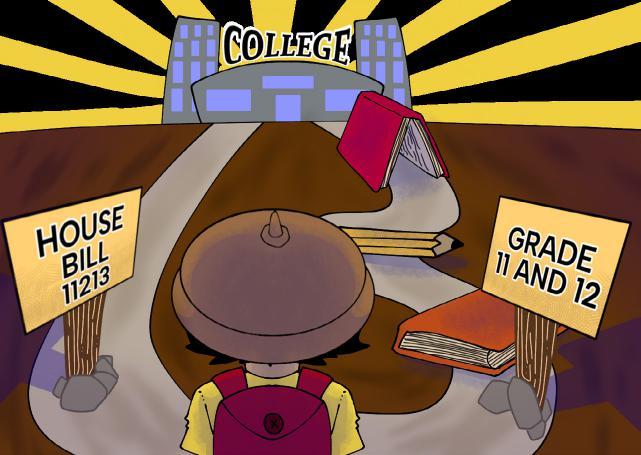
Equally pressing is the opposition from SHS teachers. If implemented, the bill could lead to declining SHS enrollment, threatening thousands of educators’ jobs. This adds complexity to

the debate, especially amid ongoing economic challenges. Any major shift in the education system must consider its long-term impact on students, teachers, and the workforce.
On the other hand, proponents, led by Lone Pasig Rep. Roman Romulo, argue that the bill provides “multiple education
Ayuda Nation
Unmasking its dark truth
pathways” suited to students’ diverse aspirations. A 2022 Pulse Asia survey revealed that 44% of Filipinos were dissatisfied with K-12, highlighting the need for comprehensive reforms.
A 2020 study by the Philippine Institute for Development Studies (PIDS) found that only 20% of SHS graduates immediately enter the workforce. Meanwhile, those who do not qualify for university programs may enroll in the Technical-Vocational Program offered by TESDA.
Ultimately, while innovation is essential, education must accommodate diverse learning paces to uphold stability, inclusivity, and long- term success. If the bill becomes law, the government must guarantee that no teacher is left behind, ensuring job security and equitable opportunities for all educators.
“Give a man a fish, and you feed him for a day; teach a man how to fish, and you feed him for a lifetime.” This famous passage from Lao Tzu resounds with the way government allocates resources nowadays.
When president Ferdinand R. Marcos signed the P6.326-trillion budget for 2025 on December 30, 2024, P26-billion went to the funding for the controversial Ayuda sa Kapos ang Kita Program or (AKAP). According to President Marcos, the government ensures that its implementation will be strategic leading to the long-term improvement of the lives of qualified beneficiaries, while guarding against misuse, and duplication, and fragmented benefits.
However, 8 out of 10 students of Mangagoy National High School perceived this as a form of band-aid solution for the pressing economic problems of the country, the recent survey says. On paper, it already seems like a bad idea but it gets worse, jumping into the rabbit hole this is several times that our past administrations and present did, but presently it triples. It basically as well you’d expect it to be a total wastage of the national wealth without the return of investments.
The 5.768 trillion National Budget for 2024 was previously an ambitious financial plan to spend money that mostly
sourced out from domestic borrowings. It pains us a lot to see those individuals working hard on the clock to put food on the table while others slack off waiting for the government assistance financially.
However, the government allies claimed that President Marcos Jr. went his way to slice up the borrowed funds handing them out to group of sectors that genuinely deserves it more than the rest like our local farmers via assessing them through agricultural means for a better food supply and production, free medical assistance like medicine and healthcare to name a few.
And not to mention, that some politicians also use ayuda as a form of bribery to win public trust and loyalty in favor of them, not surprising since the 2024 midterm elections are just around the corner.
The time is high for the general public to understand
that we cannot rely on anything forever and the dark truth of some
Dormant Involvement
Sangguniang Kabataan (SK)
Chairman Noel L. Baldomero of Barangay Mangagoy has raised concerns about the declining youth participation in barangay projects and activities, deeming it a critical issue for the success of these initiatives. He called for the SK to embrace modern tools, such as social media, to reignite youth involvement and restore their sense of responsibility toward the community.
Baldomero reported that only 30% of the approximately 6,000 young people in the barangay actively participate in SK projects, attributing the decline to distractions from social media and mobile devices. Ironically, these platforms can also be leveraged to encourage greater community engagement.
A 2023 Data Reportal study found that teenagers spend 3-4 hours daily on social media, limiting time for offline activities, including community involvement. Similarly, a 2022 Limelight Networks survey showed that gamers aged 18-25 spend an average of 7 hours per week on online gaming, which competes with time for social or civic engagement. As a result, there is a marked decrease in participation in volunteerism, sports, and other community-based activities.
Despite these challenges, Chairman Baldomero has implemented innovative strategies, including raffle draws and incentives, to encourage greater youth participation. He proposed expanding these efforts by organizing engaging activities such as sports competitions, dance challenges, and backyard cleanliness contests, aiming to foster a deeper connection with the youth and boost their involvement in community initiatives.
A 2022 study by the Center for Information & Research on Civic Learning and Engagement (CIRCLE) highlighted that social media addiction contributes to a lack of awareness of local civic issues, fostering disengagement from community initiatives. These findings emphasize the need for innovative approaches to reengage youth, using the very digital tools that capture their attention.
In support of this mission, the Learner Information Section (LFS) of Mangagoy National High School has pledged its commitment to sports, anti-drug campaigns, disaster management, and other community programs, recognizing the importance of collaboration in boosting youth involvement.
To sustain youth engagement, it is crucial to offer flexible schedules and long-term projects that provide lasting benefits for the community.
These efforts will help ensure continued youth participation, contributing to the long-term progress of the barangay. As national hero José Rizal once said, “The youth is the hope of the nation.” Their leadership and active involvement will leave an enduring impact on future generations.

RANTS RAVES
Vehement Opinions


RANT: The improper waste segregation in classrooms and the persistent littering of single-use plastics are major concerns. These issues are hindering the success of the YES-O Club’s project, ILAIN (Initiatives towards a Litter-Free Atmosphere while Interconnecting with Nature), making it challenging to achieve a cleaner, greener school environment.

RANT: The lack of water supply and gardening materials for the Gulayan sa Paaralan Program (GPP) at Mangagoy National High School has made gardening tasks exhausting. Immediate action is needed to address these issues and support the program’s sustainability.

RAVE: Congratulations to the talented young journalists from the SPJ Class for their outstanding achievements in the Division Schools Press Conference! They emerged as champions in News Writing-English, Sports WritingEnglish, Column Writing-Filipino, and Online Publishing (English and Filipino). Your hard work and skills truly deserve recognition!
Althea Gabrielle E. Geńorga Grade 12-HUMSS Kurt Palado Grade 11-STEM
Jewel V. Acasio Grade 10-Courage
BRENTH DARYLL P. MOZO
Art by: DONNA CLAIRE B. CABILLAS
Art by: DONNA CLAIRE B. CABILLAS
DONNA CLAIRE B. CABILLAS
AARON M. FERNANDEZ
WENDEL R. MABALATAN

The1,813
Yet, despite the urgency, stigma and misinformation continue to hinder progress. Many avoid testing due to fear of discrimination, despite legal protections under Republic Act 11166. This hesitation only fuels the silent spread of the virus. The nine HIV treatment hubs established in the region are valuable, but they will remain underutilized unless the culture of

Source: PNA.gov.ph
Fighting HIV in Caraga
Department of Health-Caraga (DOH-13) recently reported 185 new cases, underscoring an escalating public health crisis. With 94% of cases affecting males, particularly those aged 14 to 34, and Butuan City recording the highest numbers, the need for intensified education and intervention cannot be overstated. HIV/AIDS is not just a medical issue; it is a societal one, requiring collective responsibility from the government, schools, families, and communities.
fear is dismantled. Comprehensive sexual education must be integrated into school curriculums to equip young people with the knowledge they need to protect themselves. Condom distribution and easy access to confidential testing should also be normalized, not shunned.
Some may argue that discussing HIV prevention openly
Mental distress
The School Guidance Office has reported a rise in student mental health cases, with 10 instances this school year compared to 6 last year, indicating a growing crisis. Primary contributors include academic pressure, family issues, and bullying. To address this, the government must urgently implement interventions in schools.
This trend mirrors national data from the Department of Health, which recorded 11,182 calls to the National Center for Mental Health crisis hotline from January to October—up from 3,751 in 2022. Experts believe the actual number is much higher due to stigma and lack of resources.
Despite Republic Act 11036, the country’s mental health system remains weak. Schools lack trained counselors, and mental health facilities are underfunded. The government must improve mental health services, increase funding, and fight stigma. Without urgent intervention, this crisis will only worsen, putting more students at risk. Mental health must be prioritized.





A+ CARD


Bible’s Role The National Bible Month Celebration at Mangagoy National High School provides learners and educators an opportunity to strengthen their spiritual connection with God. It emphasizes the Bible’s role in shaping moral and cultural values, fostering love, peace, and harmony toward a God-fearing society.
Alumni’s Benevolence


Students’ Attendance


The heavy rainfall we experience often results in flooding and transportation difficulties, preventing students from attending school due to safety concerns and accessibility issues. Consequently, frequent absenteeism on rainy days can create learning gaps, lower academic performance, and reduce classroom engagement. bythe


The generous provision of our alumni batches 2003-2024 of one Smart TV, four plastic tables, and twenty mono block chairs to our SPJ room means a lot to us. Their kindness greatly enhances our instructional delivery and fosters an environment conducive to academic excellence.



encourages risky behavior, but this outdated mindset is dangerous.
The reality is that avoiding the conversation puts more lives at risk. Education does not promote immorality—it saves lives. Studies have proven that awareness leads to better decision-making, ultimately reducing infection rates. While HIV-related deaths in Caraga remain low, this should not create a false sense of security.
MEarly detection and consistent treatment can ensure that those living with HIV lead long, healthy lives. Pregnant mothers must undergo prenatal HIV testing to prevent mother-to-child transmission.
Teenagers themselves can prevent HIV by practicing safe sex, using condoms, avoiding drug use, getting tested regularly, staying informed, and making responsible
Water dilemma

choices about their health. Caraga is at a turning point. Will we allow stigma and inaction to fuel this crisis, or will we take decisive steps to fight it?
The answer lies in awareness, prevention, and unwavering support for those affected. The time to act is now.
Ensuring sustainable hydration and personal hygiene
angagoy National High School has been forced to request water rations from the Bureau of Fire Protection (BFP) and Bislig Water District (BWD) due to a dire water shortage. This issue stems from the school’s elevated location, coupled with the lack of access to sufficient clean water in the area. This alarming situation calls for immediate and collaborative action among parents, students, local government units, and other stakeholders.
The gravity of the situation becomes clear when considering the data from the Wash In School Organization (WINS): 70% of respondents reported inadequate water supply in the school, leaving only 30% who believe the current supply is sufficient. This stark disparity highlights the immense burden placed on students and teachers alike. Without access to clean water, everyday activities from maintaining hygiene to basic sanitation become significant challenges.
Mangagoy National High School is not alone in this struggle. Over 3,000 public schools across the country, spanning both elementary and secondary levels, face similar issues. Education Secretary Armin Luistro emphasized this in 2016 during the Rotary International Presidential Conference on Water, Sanitation, and Hygiene in Schools (WASH). He warned
children, out of necessity, delay using the restroom, further exacerbating sanitation problems and risking urinary health complications. In Mangagoy, teachers have resorted to collecting rainwater just to clean restrooms and maintain minimal hygiene standards. While commendable, this stopgap measure is not sustainable. Students and staff deserve reliable access to water, a basic human right and a cornerstone of a conducive learning environment. How can we expect students to focus on their education when their basic needs remain unmet?
Brenth Daryll P. Mozo, vice president of the Supreme Student Government (SSLG), aptly summarized the issue: “If this ongoing problem is not resolved, it will pose a serious threat to the health and hygiene of the entire school community. We want
organizations and private sector stakeholders specializing in water management could offer technical and financial support.Education and awareness campaigns should also be conducted to involve parents and students in the solution. By fostering a sense of shared responsibility, the school community can work together to ensure clean water access.
Furthermore, national agencies must fundingprioritize for infrastructurewater projects in schools, recognizing the direct link between sanitation and students’ academic performance andThewell-being. water shortage at Mangagoy National High School underscores a larger systemic issue that must no longer be ignored. Beyond statistics and reports, the lack of clean water

Tdirectly impacts the dignity, health, and future of thousands of students. As Brenth pointed out, failure to address this problem poses a severe threat to the school community. It’s time to act decisively, ensuring that no school—and no student— is left without this most fundamental resource.

Defy corruption
transparency and accountability
he ongoing controversy over alleged blank allocations in the congressional bicameral report on Republic Act No. 12116, the General Appropriations Act (GAA) of 2025, has ignited intense debate across various sectors, including the students of Mangagoy National High School. Corruption has long impeded national progress, eroding public trust in leadership. As the future stewards of this nation, the youth must take a firm stand against corruption by championing integrity, ethical leadership, and transparency—principles that must be cultivated within the campus and beyond.
While the Learners Formation System (LFS) election is approaching, many hesitate to run, fearing the responsibilities or possible entanglement in corruption. However, we must not let fear deter us. Leadership must be cultivated early, ensuring we develop accountability rather than replicate the failures of some political figures. Despite of being young, we
must advocate for our rights, including honest leadership and good Unfortunately,governance. those meant to be role models often exemplify corruption. The controversial 2025 budget, deemed by many as one of the most corrupt, highlights how public funds are misused for political gain. Worse, some key officials are rumored to be manipulating the system for
their 2028 political ambitions. If corruption remains normalized, true reform will be impossible. Without systemic change, the Philippines will remain trapped in a cycle where dishonesty is a way of life. To break this cycle, we must first uphold integrity in our own lives. Leadership does not begin in office—it starts in the classroom, at home,

and in daily interactions. A responsible student today is an ethical leader tomorrow. We must also have courage, speaking out against wrongdoing, and passion, driving us to fight for truth and justice. The future of our nation is in our hands. Condemn corruption. Lead with integrity. Be the generation that builds a society rooted in honesty and good governance.
numbers
EDISON A. GAMBOA
PRECIOUS MARY B. SUPERIO
BRENTH DARYLL P. MOZO
SAMASHI MAELKITH S. JABAGAT
THE ACADEME
SENTINEL
THE CRAFTSMAN
Art by: DONNA CLAIRE B. CABILLAS
2 OPINION
Forsaken travelers

Every morning, as I ride the habal-habal to school, a mixture of fear and frustration overtakes me. The road from Zion in Mahayahay, Surigao del Sur, is treacherous, often feeling like a perilous cliffside journey. Our vehicle has crashed multiple times, leaving us injured and fearful. Despite decades of appeals from barangay officials for concrete roads, the local government has not acted. This neglect has serious consequences for our community, especially the youth.
As a Grade 12 student, I am frustrated by the government’s failure to provide essential infrastructure. While other areas enjoy paved roads, our community remains neglected, trapping us in a cycle of danger and poverty. Many young people have dropped out of school to work as coal miners, mirroring national trends. According to the Philippine Statistics Authority, 10.7 million Filipino youths are out of school, with nearly equal numbers of males and females affected.

This neglect isn’t just about roads—it’s about poverty. Our community’s economic struggles demand urgent government attention. Where is the taxpayers’ money going? Short-term relief programs like TUPAD and AKAP offer little in terms of long-term solutions. What we need are permanent fixes: safe roads and stable jobs for our families. These
are the foundations of a better future, where children can safely attend school, and parents can provide for their families without constant worry. We are exhausted by the daily dangers and systemic challenges we face. It’s time for the government to prioritize sustainable development and address poverty and inequality at their roots. Our voices deserve to be heard, and our community deserves progress.
Teen crossroads Preventing cycles of early motherhood
Thenews of a 9-year-old girl from General Santos City who became pregnant, with a 12-year-old father, highlights the urgent need for comprehensive sexual and reproductive health education. This tragic event underscores the devastating consequences of inadequate guidance for youth.
Lawmakers must pass legislation ensuring that adolescents receive proper sexual education and access to quality healthcare. Senate Deputy Minority Leader Risa Hontiveros’ proposal for the Prevention of Adolescent Pregnancy Act of 2023 is a crucial step toward addressing this issue. Teenage pregnancy remains a national emergency demanding immediate action. Statistics from the Philippine Statistics Authority reveal that live births among girls aged 10 to 14 increased by 6.6%, from 2,411 in 2019 to 3,343 in 2023.
PThese pregnancies often result in young girls abandoning their education and aspirations. Teenage mothers face societal stigma and isolation, while teenage pregnancy perpetuates cycles of poverty and inequality, hindering national progress.
The solution lies in addressing root causes like the lack of sex education and socio-economic disparities. Lawmakers must pass policies mandating sciencebased sexual education and accessible reproductive health services, including contraceptives and counseling. Parents should

foster open, non-judgmental communication about relationships and early pregnancy consequences. Schools must integrate sexual education into curricula, providing safe spaces for discussions, with trained teachers and counselors offering guidance. No child should sacrifice their future due to an unplanned pregnancy. Through collective action—legislation, parental involvement, and educational reform—we can break this cycle and ensure every young Filipino has the opportunity to reach their full potential.
Plastic environment
lastic pollution in the Philippines is driven by single-use plastics like sachets, shopping bags, and thin-film bags, with Filipinos using over 163 million plastic sachets, 48 million shopping bags, and 45 million thin-film bags in 2019 alone. This pollution clogs waterways, disrupts marine life, and impacts coastal communities’ livelihoods. Similarly, in schools, despite policies, students continue to litter, contributing to waste. Addressing this issue requires comprehensive waste management strategies, public awareness campaigns, and the promotion of sustainable alternatives such as reusable containers, biodegradable products, and paper-based materials. A plastic-free school not only supports a healthier planet but also safeguards the health and safety of future generations.
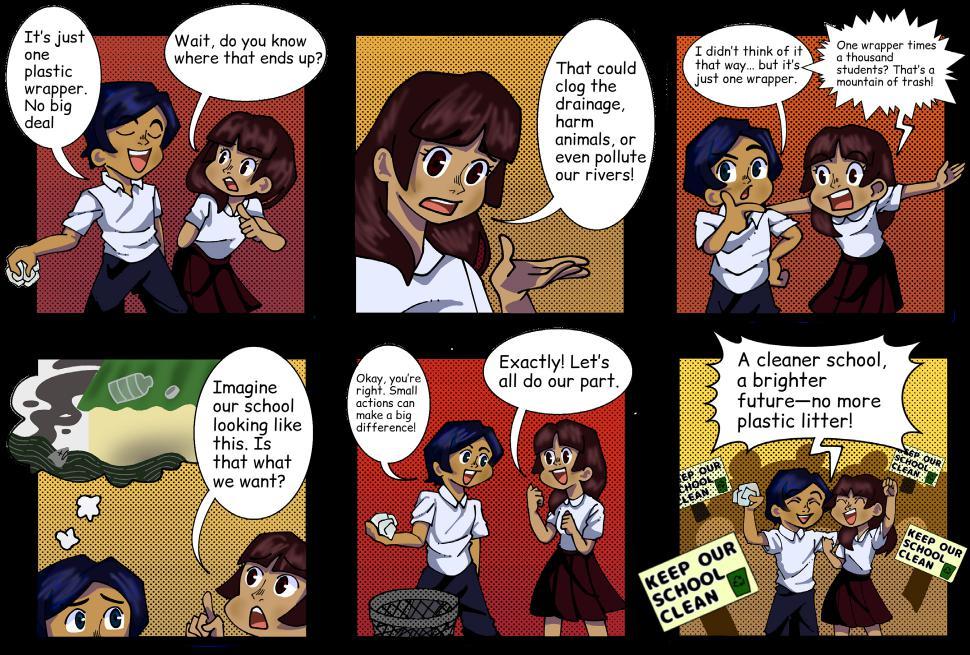
THE WORDSMITH
A Double-edged blade
Striking a balance of AI and education


“It baffles me if I walked in the right path of embracing technology.” This statement, uttered by a classmate during our Practical Research subject, reflects the confusion many students face as reliance on artificial intelligence (AI) in academics grows.
In fact, 7 out of every 10 Senior High learners who have gadgets use AI tools like ChatGPT, Grammarly, and image generators that have become essential allies, offering unparalleled convenience and efficiency. However, this growing dependence raises critical questions about its impact on learning, creativity, and ethics.
AI tools provide significant advantages, particularly in saving time and boosting productivity. They assist in drafting essays, improving grammar, generating ideas, and solving complex problems. Students struggling with language barriers or learning disabilities find these tools especially helpful for real-time support and guidance. Additionally, AI serves as
use AI to complete assignments entirely, undermining academic integrity and depriving themselves of genuine learning experiences. Over time, this dependency may foster a “shortcut mentality,” prioritizing convenience over effort and growth. AI’s limitations—such as an inability to fully understand context, nuance, or creativity—further exacerbate these issues, leaving students ill-prepared for real-world challenges.
To address this, educators must incorporate AI into the curriculum as a tool rather than a crutch. Teaching students how to use AI responsibly— for brainstorming, editing, or research—can harness its benefits while maintaining academic integrity.





Dear Editor,
I am deeply concerned about the rampant theft occurring in our classroom. Many of us have lost money and personal belongings, often disappearing within a short period of being left unattended. This issue has caused significant distress among students, and we fear it may continue unless addressed promptly.
Could you help us bring this matter to the administration’s attention and request immediate action to ensure the safety and security of our belongings? Your support would mean a lot to us.
Thank you for your understanding and assistance.
Sincerely, Ellah
Dear Ellah,

Thank you for bringing this pressing matter to our attention. The safety and security of our students are a top priority, and we deeply regret the distress caused by the thefts in your classroom.
We will immediately raise this issue with the school administration to ensure necessary actions are taken. Possible measures, such as stricter monitoring, improved security protocols, and awareness campaigns, will be considered to address the problem effectively.
Your initiative to voice this concern is commendable, and we are committed to fostering a safe and secure learning environment for all.
Sincerely, Editor
DAVID RJ DE LOS SANTOS
PRECIOUS MARY B. SUPERIO
DONNA CLAIRE B. CABILLAS
Art by: DONNA CLAIRE B. CABILLAS
DONNA CLAIRE B. CABILLAS Art by:
Art by: DONNA CLAIRE B. CABILLAS
Art by: DONNA CLAIRE B. CABILLAS
JANINE P. POLINA

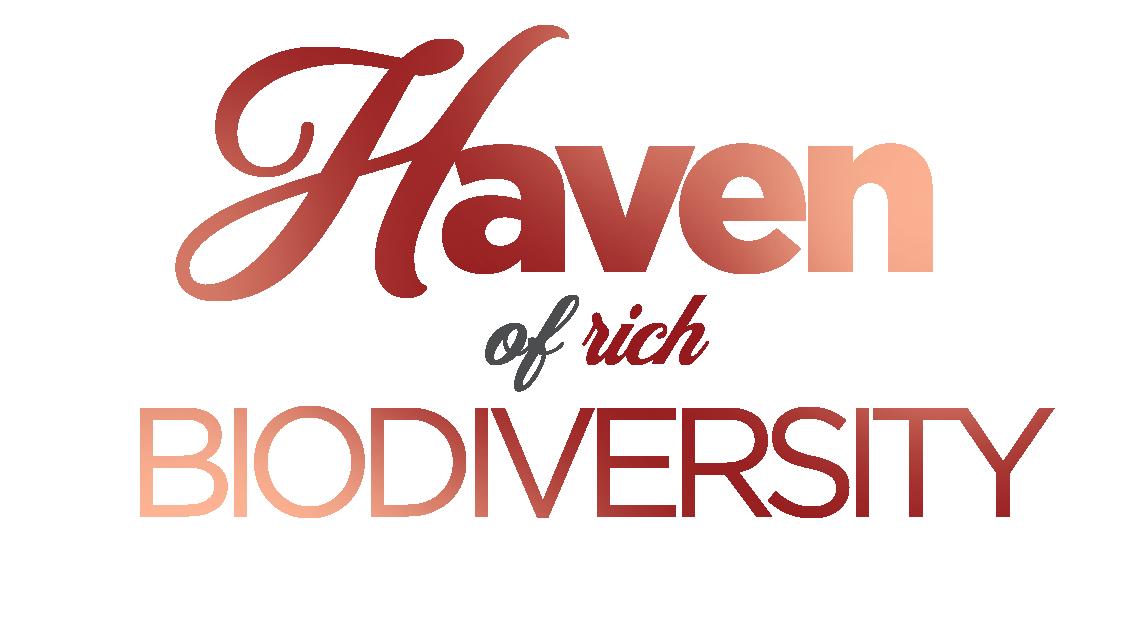


Behold the magnificent natural wonder that cascades like a silver curtain through the lush jungle!
Deep in the heart of towering green trees, where hummingbirds dance and wildflowers bloom, lies a majestic waterfall with breathtaking beauty, misty embrace, and enchanting rainbows. Explore a hidden paradise where nature unveils one of its finest masterpieces—Tinuy-an Falls. Often dubbed the “Little Niagara of the Philippines,” this multi-tiered cascade is an enchanting wonder, drawing visitors with its sheer beauty and raw, untamed power.
As you approach Tinuy-an Falls, the sound of gushing waters echoes through the lush jungle, a melody of nature that grows louder with every step. The falls stretch 95 meters wide and plunge from a height of 55 meters, creating a shimmering white curtain that glows under the golden sun. The mist dances in the air, kissed by rainbows that appear like magic, making the sight

almost surreal.
Surrounding the falls is the Tinuy-an forest, a thriving ecosystem teeming with diverse flora and fauna. Towering hardwood trees, exotic orchids, and lush ferns form a green cathedral, sheltering a variety of wildlife. Among its most prized inhabitants is the majestic Philippine eagle, soaring high above the canopy, a symbol of strength and freedom—the country’s rich biodiversity. The forest also provides a home to colorful kingfishers, rare butterflies, and playful monkeys, making it a haven for nature lovers and wildlife enthusiasts. Framed by towering trees and vibrant flora, Tinuy-an

Falls is more than just a scenic retreat—it is a sanctuary of serenity, a place where time slows down and the soul reconnects with the wild. Whether you seek adventure or peace, this hidden gem of Mindanao will leave you in awe, whispering the untold stories of nature’s splendor.
For adventurous food lovers, savoring delicacies like tamilok (the “oyster of the forest”) and high-jumping frogs is more than a culinary experience—it’s a journey into culture. These unique dishes, deeply rooted in tradition, offer a savory glimpse into the vibrant histories of the communities that cherish them.
In Bislig City, the Plaza family, a blend of Manobo-Mandaya heritage, welcomes guests to their mini resort floating Lake 77, where exotic treats like frogs and tamilok headline the menu. Frog dishes, often grilled, fried, or simmered in stews, are a local favorite. Their tender, chickenlike meat surprises first-timers with its subtle, savory flavor. In Northern Luzon, sautéed frog legs with lemongrass and chili are a regional classic, while Bislig offers its own twist—frog adobo. Frogs, more than just a delicacy, symbolize fertility and good fortune in local culture.
Tamilok, a slimy woodworm harvested from mangroves, may appear unusual but delights with an oyster-like briny flavor and a nutty undertone. Served raw and marinated in vinegar, lime, and chili, it becomes a tangy, cevichestyle dish. “It’s especially beneficial for lactating mothers,” says Mrs. Paza. The harvesting of tamilok is an ancient, sustainable practice passed down through generations, helping to protect mangrove ecosystems.
For tourists, tasting tamilok often becomes a communal experience, with locals guiding them through their first bite. These exotic delicacies are more than just food—they are a window into survival, ingenuity, and heritage.
Next time you visit Bislig, take a leap of taste. Frogs and tamilok offer not only nourishment but a rich, unforgettable adventure with each bite.


Photos from: Flickr
Photos by: Brenth Daryll P. Mozo
BRENTH DARYLL P. MOZO
EDISON A. GAMBOA
raw tamilok

Once, Bislig’s sprawling forests stood as emblems of abundance and industrial progress. Today, those same landscapes tell a new story of resilience, rebirth, and a community’s transformation from an industrial hub into a sanctuary of natural wonder. In 1952, the Paper Industries Corporation of the Philippines (PICOP) began harnessing Bislig’s vast forest resources, propelling the city into prominence. A titan in Southeast Asia’s pulp and paper industry, PICOP wasn’t just an economic force; it was a community builder, constructing roads, schools, and homes, and turning a quiet town into a thriving industrial hub.
But PICOP’s rise came at a cost.
Decades of unsustainable logging stripped the forests, the very heart of its operations. With dwindling resources and tighter environmental regulations, the company struggled to adapt. Cheaper imports and advanced technologies outpaced PICOP’s aging facilities, while mismanagement and financial woes compounded its challenges. By the early 2000s, PICOP closed its doors, leaving thousands jobless and an economy in free fall. The closure scarred both the landscape and the livelihoods tied to it.
Yet, from the ashes of PICOP’s
ips
collapse, Bislig found a renewed purpose. The city turned to its greatest remaining asset: its natural beauty. Tinuy-an Falls, a breathtaking multi-tiered cascade dubbed the “Niagara Falls of the Philippines,” became the centerpiece of an ecotourism renaissance. Visitors from near and far were drawn to the falls’ majestic allure, rekindling hope and sparking local entrepreneurship. This shift towards ecotourism wasn’t just about economic survival—it was a commitment to preserving Bislig’s biodiversity and fostering sustainable livelihoods. Despite challenges like limited infrastructure, the community’s determination has reshaped Bislig into a haven of ecological preservation and cultural pride. The story of Bislig and PICOP is one of contrasts: progress and decline, exploitation and renewal. It serves as a painful reminder of the delicate balance between development and conservation. Today, as the “Crown Jewel of Ecotourism,” Bislig thrives not by exploiting its environment but by celebrating and protecting it. In its transformation lies a universal truth: even in the face of adversity, nature and community can find a way to heal and flourish.
dEcRy foR pEacE and jusTicE
Like ancient trees with roots deeply entwined in the soil of time, the Manobo and Mandaya tribes of Mindanao carry a rich cultural heritage reflected in their languages— Minanobo, Mandaya, and Kamayo—echoing across their ancestral domains. However, their journey has been fraught with challenges that tested their resilience.
In 1969, the Communist Party of the Philippines-New People’s Army (CPP-NPA) infiltrated the indigenous communities under the guise of promoting self-governance. According to tribal leader Datu Lanes, the rebels undermined traditional leadership, recruited radical youth, and targeted ancestral domains for guerrilla operations. Over 1,000 tribal leaders who resisted were reportedly slain, and many children were recruited as warriors.
Seeking refuge from violence, the tribes
No





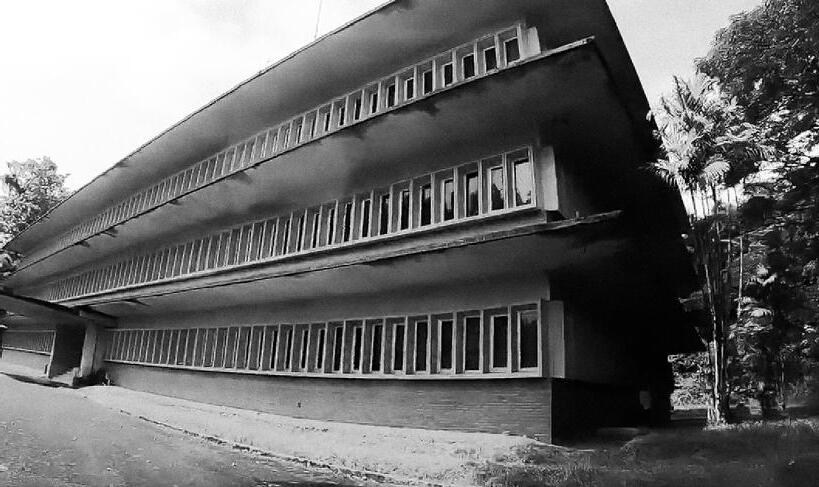
matter the shade of your skin, you are a thread in the vibrant complexity of humanity, deserving the light of education, the calm of peace, the journey of progress, and the unwavering balance of justice.
migrated to some parts in Surigao del Sur, leaving the rugged hinterlands of Davao and Agusan. Bislig offered fertile lands, abundant forests, and rivers for fishing, allowing the tribes to rebuild their lives. Yet, their coexistence was initially marred by territorial disputes and cultural differences, which led to conflicts. Over time, intermarriages fostered kinship and transformed animosity into harmony.
The Indigenous Peoples’ Rights Act (IPRA) of 1997 marked a turning point, granting indigenous peoples rights to ancestral domain ownership, self-governance, and cultural integrity. With support from the National Commission on Indigenous Peoples (NCIP), the tribes reclaimed their rights, including stewardship of the iconic Tinuy-an Falls.
In Bislig and some parts of Surigao del Sur, communal farming practices like
baliga (reciprocal labor) and yupog (sharing the harvest) strengthened bonds among community members. Their crops—rice, banana, and coconut—thrived alongside sweet potatoes,banana, cassava and vegetables, ensuring sustenance and economic stability.
Through perseverance, the Manobo and Mandaya tribes not only regained their ancestral lands but also restored their dignity and peace. They achieved access to education and justice, transforming their narrative into one of resilience and unity. Today, they exemplify the enduring strength of indigenous peoples in preserving their cultural heritage and ancestral domains while embracing progress.

keeper of hopes and treasures
CARRYL MAE O. IBANEZ

ome curse her, calling her a witch, a sorcerer, an outcast unworthy of humanity. Yet beneath their scorn, she carries the fire of compassion, burning brightly for her tribe even in their darkest hours.
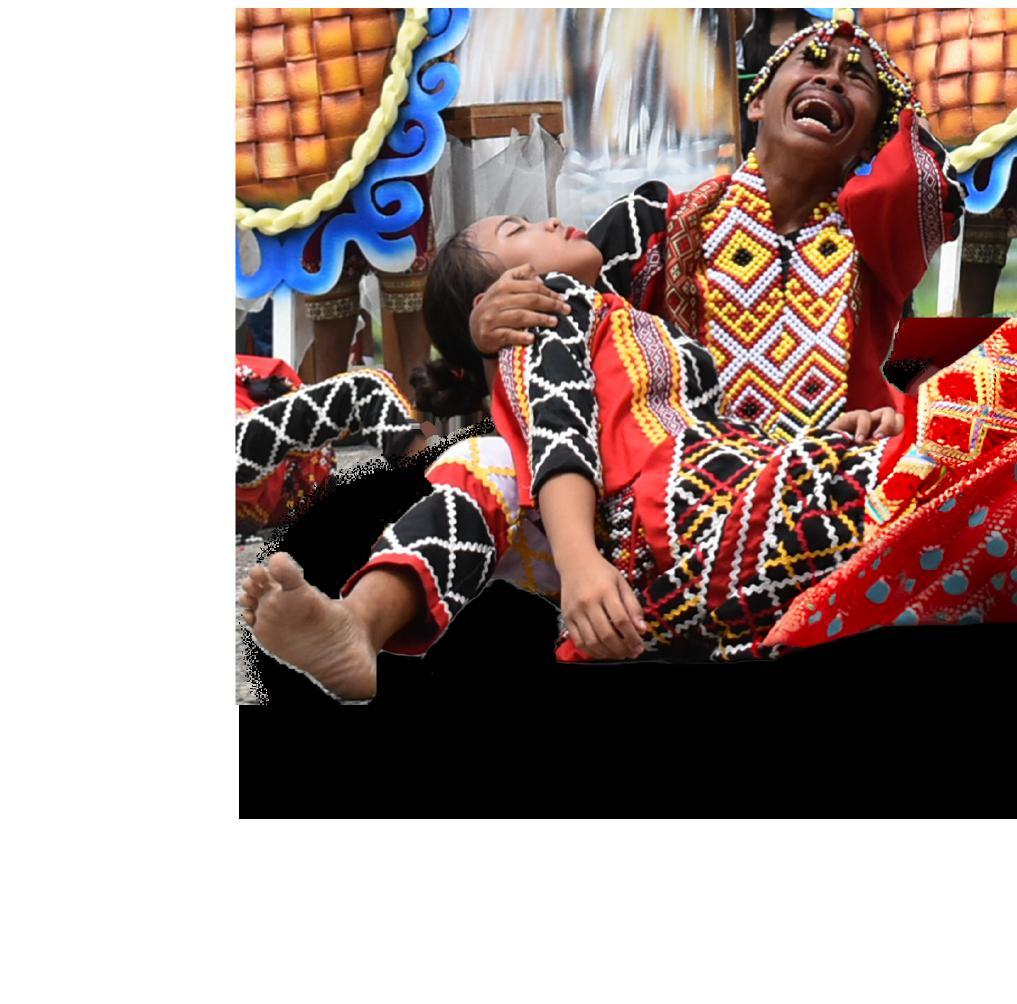
of hope, reviving the wisdom of our ancestors.
“On sacred days, I prepare remedies from nature’s bounty and perform rituals passed down through generations. My touch heals the sick; my spirit mends the weary. Yet society mocks us, dismissing our sacred practices as madness. Since birth, I’ve borne ridicule, each stone of judgment chipping at my spirit. As a Babaylan, I’ve carried burdens no young healer should face,” she said. Amid this storm, my mother’s final words became my anchor: “Do not be ashamed of your identity and origin, for that is your destiny.” Her wisdom ignited a fire within me, awakening my calling to bridge ancient knowledge with today’s needs.
Born in Bislig City’s secluded villages, I grew up amidst the mystique of the Mandaya Babaylan. Visitors marvel at rituals like the Pag-aanito, where tools like abuhin and tawas foster healing and unity. Our ancestors mastered nature’s
the shadows of doubt. Though scorn rains down, I rise unbroken—a lighthouse for lost souls. My journey is a Babaylan’s plea for hope, a healer’s hymn to humanity. Throw stones at me, and I will return them as bread. I am a Babaylan, choosing compassion for eternity.

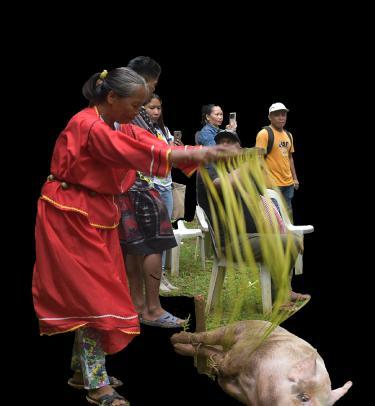
EDISON A. GAMBOA
Tribal leaders reportedly slain due to defiance of rebels’ orders.
Source: NCIP
Photos by: Brenth Daryll P. Mozo
Photos by: Brenth Daryll P. Mozo
Photo by: Daniela Jacinth C. Cruz
Photos by: Precious Mary B. Superio




Office, Bislig turned its gaze from the sea to its crown jewel—Tinuy-an Falls
“Little Niagara Falls” of the Philippines. The festival celebrated the falls’ ethereal conservation with cultural artistry. It was a strategic leap to align with ecotourism,
Yet, Bislig’s heart remained tethered Karawasan Festival returned, dancing



blending the old with the new, sea with waterfall, and tradition with innovation. Every September 17th, Bislig transforms into a stage where culture and nature converged. The Karawasan Festival honors the city’s marine treasures, while the Tinuy-an Sayaw Festival amplifies the grandeur of its iconic falls. This harmonious duet is a proof of Bislig’s soul, a living canvas of heritage and splendor. Visitors are invited to witness this unique celebration, where every beat and ripple echoes Bislig’s timeless charm.

beauty in authenticity, believing that true elegance comes from nature in its purest form. By designing gowns from indigenous materials, they don’t just create fashion; they tell a story of pride, identity, and deep connection to their roots. Each piece is a tribute to their heritage and a promise to protect the Earth, reminding us all that sustainability and culture can go hand in hand.
While most pageants dazzle with modern gowns crafted from luxurious fabrics, the Search for Miss EcoTinuy-an Goddess stands out as a celebration of nature’s artistry. This unique event showcases indigenous gowns made from eco-friendly materials, designed to decompose naturally without leaving harmful waste behind.
Neveah Geńorga, a Grade 12 student and this year’s titleholder, described her gown as a masterpiece, weaving together the stories of nature and culture. Coconut husks and shells were transformed into delicate embellishments, flowers contributed their fleeting beauty, and fibers like ‘ginit’ provided a sturdy yet graceful foundation. Dried fern leaves captured the essence of lush forest canopies, while intricately woven romblon mats highlighted the timeless craftsmanship of local communities. These elements combined to create a garment both earthy and ethereal, blending raw natural elements with refined elegance. Geńorga shared that crowning these creations are headdresses inspired by the Philippine eagle, the majestic haribon. This endangered “king of the birds” symbolizes

strength and pliability, a powerful reminder of the fragile ecosystems that sustain life. The cascading layers of the gowns echoed the majestic tiers of Tinuy-an Falls, the “Niagara of the Philippines,” seamlessly merging human creativity with nature’s grandeur. With her eloquence and stunning indigenous attire, Neveah soared to victory, earning the title of Miss Tinuy-an Goddess 2024. City Tourism Officer Ms. Lorilei Teresa D. Lim emphasized that beyond its visual splendor, this pageant serves as a call to action. Contestants in the Duyog Saulog Search for Miss Tinuy-an Goddess become ambassadors of environmental conservation, with their gowns symbolizing sustainable practices. As these young women take the stage, draped in the essence of the forest, they send a powerful message: true beauty lies in harmony with nature. This pageant is a vivid reminder that progress and preservation can coexist, inspiring everyone to cherish and protect our planet for generations to come.
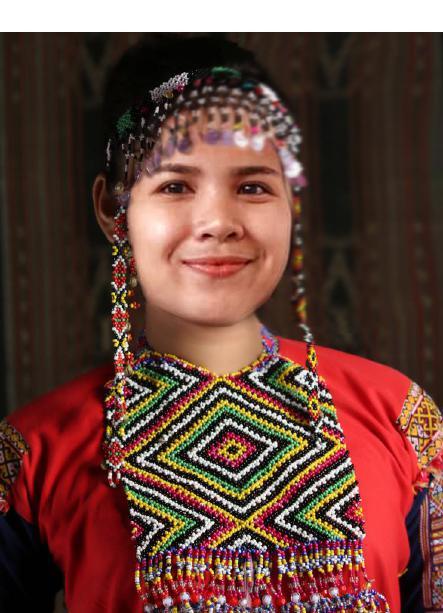
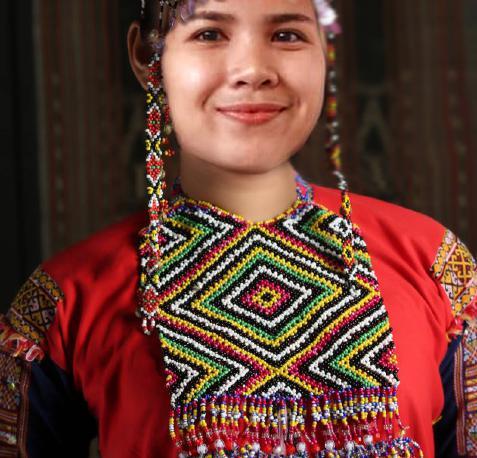
“Dili angay tamayon ang kapobrehon sa usa katawo kay kung kini maningkamot lang, kaya niyang aboton ang kinabuhi nga sama sa usa ka
They called me a princess— after all, I am the daughter of the Datu of our Mandaya tribe. But not all princesses live in castles, draped in silk and adorned with jewels. I still remember my classmates in elementary whispering, “She’s a princess without a crown.” They were right.
I am a princess who toils under the sun, my hands rough from weaving abaca and harvesting coconuts. A princess who braved dark tunnels just to help my family make ends meet. A princess who has never tasted a burger or ice cream—only the fish from the river and the wild game from the forest. A princess who owned only two notebooks for school and struggled to complete my teacher’s requirements.
Life was tough. I walked to school on an empty stomach,
my feet slipping into worn-out slippers, their soles thin and riddled with holes. But hunger and hardship never broke me. I rose above them, graduating Class Salutatorian in both elementary and high school. Yet, the real test awaited me in college. There, I did not just battle financial struggles—I faced something even heavier: discrimination. The Mandaya princess became a punchline in a world that did not understand her. But what they failed to see was that my heritage was not my weakness—it was my strength. Through a scholarship from the National Commission on Indigenous Peoples (NCIP) for the Mandaya Tribe, I turned the whispers of doubt into echoes of triumph. I may not wear a golden crown, but I have achieved something far greater—I have made my tribe proud like a royalty. Today, I stand tall as a registered electrical engineer and registered master electrician—proud of my roots, proud to be indigenous.
Daniela Jacinth C. Cruz
JANINE P. POLINA
AARON M. FERNANDEZ
Photo by: Brenth Daryll P. Mozo
Natalyn Diansay Indiola (Mandaya tribe
Photo by: Precious Mary B. Superio


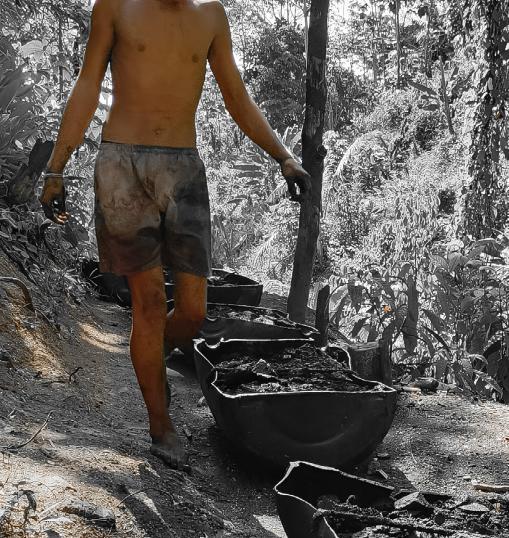
bLack g bEnEaTH

In the shadowy depths of shallow mines, small-scale miners toil like modern-day Prometheans, wielding humble tools to extract coal’s hidden veins. Each fragment of this “black gold” is brought to the surface through Herculean effort, as they navigate suffocating tunnels and treacherous ground armed only with sheer determination.
This is the daily reality of Benben Dumaran, an 11th grader from the tranquil mountains of San Jose, Bislig. Balancing education and labor, Benben personifies resilience, driven by hope and unyielding ambition. To pursue his dreams and support his family, he dedicates countless hours to Mang Lucio’s mine, digging for coal with hands calloused by both hardship and resolve.
His grandmother, Lola Aning, a 67-year-old laundress, has raised him and his two siblings since their parents abandoned them. Seeing her worn, calloused hands inspired Benben to shoulder more responsibility.
Every day at dawn, Benben ventures into the misty mountains, armed with sacks, ropes, a shovel, and a hammer. Descending into the mine’s depths, he works under the glow of a lantern, extracting chunks of coal and crushing them by hand. Each filled sack is painstakingly hauled to the surface. He is earning 500 pesos daily—a lifeline for his family and education. Despite the grueling work, Benben excels academically, ranking among the top in his class. His dream? To graduate high school and become a marine engineer, a goal he pursues with relentless dedication. Benben proves that even in the harshest conditions, determination can uncover hidden treasures. From the black soil beneath his feet, he shines as a gem of his generation, forging a brighter future.
’s nEvER T
a n

Life often teaches us lessons in the hardest ways, but it also offers second chances. Let’s bear a story as a reminder to teenagers: mistakes may alter the path, but they don’t have to define the destination.
At just 15, Jella’s world turned upside down in a way most her age could never imagine. Once a spoiled brat who always got what she wanted, Jella defied her parents’ advice, indulging in late-night outings and a carefree relationship with her boyfriend. Her rebellion, however, came with a heavy price—she became a mother far too soon.
When her parents learned of her pregnancy, their home was filled with disappointment and heartache. Despite their pain, they stood by her. Abandoned by her live-in partner, Jella faced the struggles of motherhood with her parents as her only support. She dropped out of school to care for her child, relying on her parents for basic needs while taking on laundry work for neighbors to help provide for her baby. “My child is my life. I need to take on laundry work from neighbors to help provide for my child,” Jella said with unwavering resolve.

But tragedy struck when her baby fell ill with dengue. Without the means to afford hospital care, Jella watched helplessly as her child’s condition worsened. Losing her baby plunged her into unbearable sorrow, leaving her haunted by guilt and regret.
Yet, in the midst of her grief, Jella found clarity. Encouraged by her parents, she returned to school, enrolling in Grade 10 with a renewed determination to rebuild her life and honor her child’s memory.

“I’ve learned my lesson,” Jella shared. “I won’t let my dreams slip away again. Relationships can wait, but dreams can’t.” Today, Jella’s story stands as a testimony of courage and redemption that it’s never too late to start anew.

master weaver, cursed by Athena to endlessly spin her web?
CARRYL MAE O. IBANEZ
Photo by: Daniela Jacinth C. Cruz
Photo by: Precious Mary B. Superio
EDISON A. GAMBOA
JANINE P. POLINA
JANINE P. POLINA
Art by: Donna Claire B. Cabillas
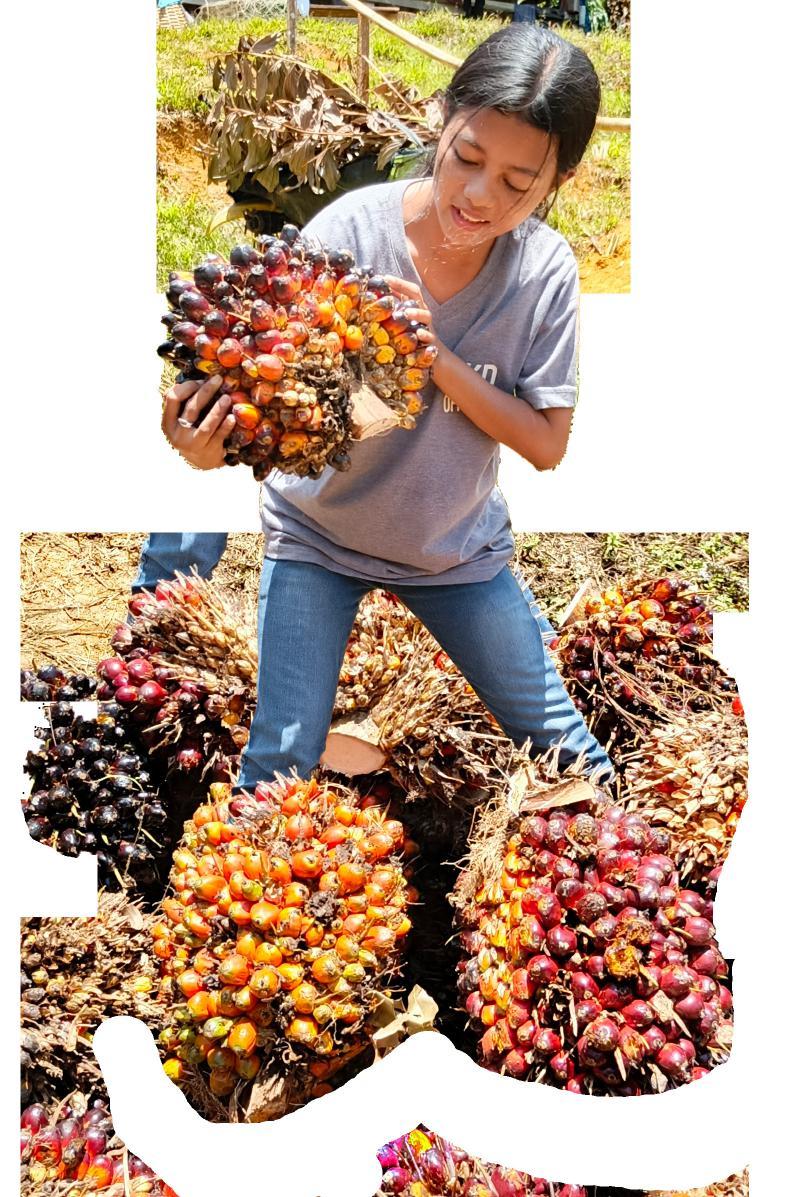
feature
LifTing THE WEigHT of disabiLiTy
Disability is not a weakness; it is a challenge that can be overcome. Even with the weight of countless logs on my back, I will rise, and I will endure.
Life greeted me with turmoil. Deprived of privileges, my dreams felt distant, my existence marked by stares of disgust and avoidance. My disability— Tourette Syndrome—casts me as an outsider. Yet, I fight tirelessly, driven by the need to support my sibling as we navigate life as orphans, burdened by hunger and grief.
Everyday life is a struggle. My blurred vision and weakened hearing amplify my challenges, while unrelenting spasms in
B itterSweat

Inthe face of relentless challenges, one can rise as a symbol of courage, determination, and grace. Kicci, a 12th grader at Mangagoy National High School, embodies this resilience. Born into poverty and orphaned by her father’s passing, she has shouldered the weight of her family’s survival, harvesting palm branches to support her two younger siblings.

“Life is bitter,” Kicci shared. “I’m the pillar of our home, splitting my time as a worker, sister, and student. I work hard so my siblings can eat and dream of brighter futures.”
Her day begins at 3 a.m., trekking a kilometer to the fields with her mother. Armed with heavy tools, they cut palm branches under the misty dawn, enduring the stings of insects and the strain of labor. By 5 a.m., Kicci rushes home to prepare a simple breakfast, rice and dried fish for her siblings before they head to school. Her mother sells the harvest, earning 200 to 500 pesos, depending on the load.
Despite the grueling routine, Kicci

survival.
Each day, I endure the blazing sun, the sweat streaming down my face, and the weight of timber that seems almost unbearable. I stumble and fall, but I rise again. For nearly two kilometers, I carry my load from the highlands of Cauntuan to the lowlands, every step a testament to resilience. While others rest on weekends, I labor. I forgo personal joys and self-care, channeling all my efforts into securing enough for our daily needs. Life’s storms may batter me, but I remain unbroken. Though paralyzed by circumstances, I refuse to be defeated. Life’s hardships

excels in her studies, driven by dreams of a diploma and a gold medal. “No matter how hard it is, I’ll do everything for their brighter future,” she said, tears glistening in her eyes. Her story is an example of love and hard work. Breaking barriers, she proves that strength transcends gender, drawing power from her family’s dreams. Through hardship, Kicci transforms adversity into motivation, lighting the way toward a future free from poverty. Her journey, marked by sacrifice, is a profound reminder of the unyielding pursuit of hope and dreams.

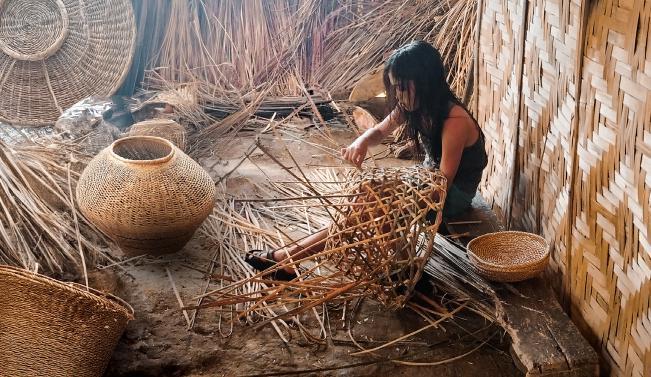
In the remote sitio of New Jerusalem, San Jose, Bislig City, Myra, a spirited Grade 7 student, has taken up this timeless craft. Beneath the towering trees, in a fragile shanty hut, she weaves a tale of endurance and determination. Myra’s journey began at the tender age of five, guided by her mother and siblings to master the art of basket weaving. Her family’s livelihood depended on the forest’s natural treasures— rattan and nito—gathered by her father and elder brother. Myra’s hands soon became adept at creating intricate designs: not only baskets but also kitchen wares, home decorative, and furniture as delicate as lacework. For the family, weaving was not just artistry; it was survival. Modest earnings barely met their needs, but Aling Mila, Myra’s mother, remained the steadfast anchor. Hardened by years of labor—

Wading THRougH THE cuRREnT
Life’s journey is much like navigating an endless sea, where we sail through hardships, driven by winds toward the shores of opportunity. In this vast expanse, there are young individuals like Cyril Ace Mirabueno, an exceptional Grade 8 student from Mangagoy National High School.
washing clothes and selling bamboo shoots—she dreamed of her children’s education unlocking a brighter future. Their sacrifices bore fruit. Through countless sleepless nights, the family transformed their craft into a thriving business. A small store, brimming with handwoven goods, stood as a testament to perseverance. The rewards? All five children attended state colleges, a sturdy home replaced their fragile hut, and a bongo truck expanded their reach. Even now, Myra’s story inspires. Under the dim glow of a kerosene lamp, she weaves not just baskets but dreams—binding tradition, hope, and the unbreakable spirit of a young artist destined for greatness. Her hands carry forward a legacy, proving that the threads of struggle can create a masterpiece of triumph.
His weekends aren’t spent in leisure, but instead, he ventures into the river estuaries, searching for treasures like suso, liboo, bukgay, tuway, and other prized kabibi shells. These efforts, born from necessity, shape Cyril’s world and represent his ongoing struggle for survival.
For Cyril and many others in his position, the fight against poverty forces them to mature far beyond their years. The kabibi, known for its unique flavor, isn’t just a source of nourishment but also a crucial part of their livelihood. In local markets, kabibi is a highly soughtafter delicacy, prized for its affordability and fast turnover. But behind the scenes, Cyril faces an unpredictable and often challenging reality, where every fishing trip is a gamble, with no guarantee that the day’s catch will be enough to support his family.
The market’s demand for kabibi
fluctuates, with sellers reserving stock and raising prices in anticipation of scarcity. Yet, on any given day, Cyril could return empty-handed or face a market where prices drop to avoid spoilage. This push and pull between supply and demand reflects the harsh realities Cyril must navigate daily. For him, this isn’t just about collecting shells—it’s about ensuring his family has enough to eat and that they can make it through another day.
Cyril’s story highlights the hard work and strength found in the young people who carry the weight of their families’ survival on their shoulders. What may seem simple or effortless to some is a formidable challenge for those who are constantly struggling to make ends meet.
Young individuals like Cyril, balancing school with the responsibility of supporting their loved ones, remind us of the immense courage and maturity needed to face life’s hardships. Their perseverance, even in the face of adversity, is a powerful evidence of the human spirit. Like sailors crossing turbulent currents, they press forward, navigating through life’s storms with unwavering determination.
Photo by: Daniela Jacinth C. Cruz
Photo by: Daniela Jacinth C. Cruz
EDISON A. GAMBOA
EDISON A. GAMBOA
Photo by: Aaron M. Fernandez
2 SCI-TECH
oRganic faRming sTREngTHEnEd in scHooL
To educate students about organic fertilization methods, Arnold L. Cacayan of Cacayan TESDA Integrated Farm conducted a symposium on January 24, 2025, at Mangagoy National High School.
Cacayan introduced various ways to produce organic fertilizers within the school, beginning with an explanation of what plants need to grow and thrive.
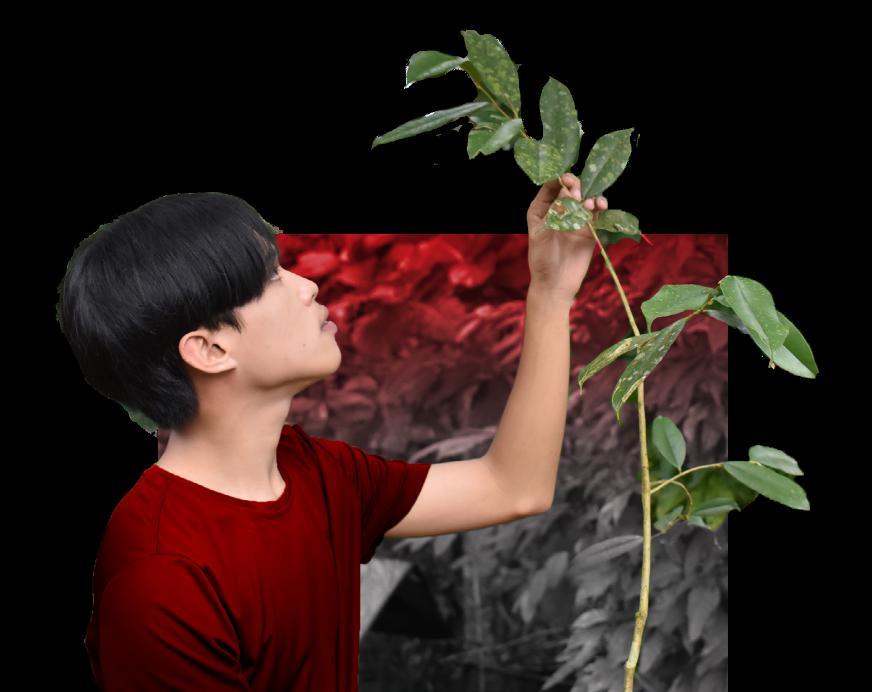
“We must first understand the requirements of a plant because it cannot survive unless we provide what it needs to grow and bear abundant fruit,” he emphasized. During the event, students actively participated in making organic fertilizers.
Cacayan introduced Fish Amino Acid (FAA), a natural fertilizer rich in nitrogen and micronutrients. It is made from fish parts and molasses derived from crushed sugarcane.
He also discussed Fermented Plant Juice (FPJ), which promotes plant growth. This is created from sweet potato tops, water spinach, banana trunks, and molasses. Another method he shared was Fermented Fruit Juice (FFJ), a natural taste enhancer made from banana, watermelon, papaya, and molasses.
Additionally, he introduced the Oriental Herbal Nutrient (OHN), a natural pesticide made from ginger, garlic, chili, vinegar, and molasses.
As part of the learning experience, students
With AI and IoT,

fragrant treasure of nature
Hidden beneath forest roofs, a rare and precious gift thrives—Agarwood, often called “the wood of the gods.”
The aromatic resin, produced by Aquilaria trees, is as elusive as it is enchanting, blending woody and spicy notes with a rich, intoxicating essence. Harvested through nature’s trials, its formation is no accident. When wounded by fungal infections, Aquilaria trees produce resin as a defense mechanism, a slow-growing treasure that can take decades to mature.
Dr. Robert A. Blanchette, a renowned forest pathologist from the University of Minnesota, has unraveled the science behind agarwood’s formation. His research reveals how fungal infections trigger resin production, while his collaborations in Papua New Guinea and Bhutan focus on sustainable cultivation methods. Balancing the economic demand for agarwood with conservation, Dr. Blanchette’s work highlights the delicate relationship between commerce and ecology.
Agarwood has captivated royal courts, religious ceremonies, and traditional medicine for centuries. Its
essential oils, studied by Dr. Wong Khoon Meng of the National University of Singapore, are known to soothe anxiety, stress, and insomnia, while Ayurvedic practices use it to aid digestion and enhance focus. Yet, this fragrant jewel comes at a cost. Overharvesting, illegal logging, and deforestation have placed Aquilaria trees at risk of extinction.
Conservation efforts are now in full bloom. Organizations like CITES regulate agarwood trade, while sustainable farming practices encourage its cultivation alongside other crops. Local communities in Southeast Asia rely on this commodity for their livelihoods, but rising demand has fueled illegal activities, threatening its survival.
Agarwood is more than a luxury—it is a bridge between nature, culture, and commerce. With mindful cultivation and conservation, this fragrant treasure can continue to enrich the people in Bislig while preserving the ecosystems it calls home.

participated in a hands-on demonstration, creating the fertilizers themselves, which they would later use once ready.



Farming is no longer just about plows and shovels. Technology has revolutionized the agricultural sector, with artificial intelligence (AI) emerging as one of the most significant advancements. AI now plays a crucial role in selecting high-quality seeds, ensuring proper crop care, and increasing yields through datadriven decision-making.
A recent study conducted by SHS STEM students at Mangagoy National High School explored the use of IoT microchip sensors in their Action Research project. These sensors monitor soil moisture, temperature, and other essential data needed to maintain optimal crop conditions, demonstrating how smart technology enhances farming efficiency.
One notable example of AI-driven agricultural technology is CropX, an AI-powered platform already in use in several countries. CropX integrates IoT sensors with machine learning algorithms to analyze soil conditions, measuring moisture, temperature, and nutrient levels. The AI processes this data to determine optimal irrigation and fertilization schedules. To further

professor at the University of the Philippines Los Baños, highlights the significance of these innovations: “The integration of AI in farming minimizes resource wastage, optimizes crop health, and enhances overall productivity. Smart sensors and predictive analytics can help farmers combat climate uncertainties, improve sustainability, and ensure food security.”
Ms. Mizpha Joy Aclon, ICT Coordinator for Senior High School and Robotics teacher at Mangagoy National High School, shares similar insights:
“With the help of sensors, farming becomes more efficient. Overwatering and fertilizer deficiencies are avoided, preserving soil health and the environment. This technology also improves crop yields by identifying the ideal conditions for plant growth. Most importantly, it helps farmers save resources—reducing water, fertilizer, and other input waste.”
This kind of technology not only reduces the workload of farmers but also ensures a stable food supply. As AI continues to evolve, future innovations are expected to enhance pest control, improve crop prediction models, and
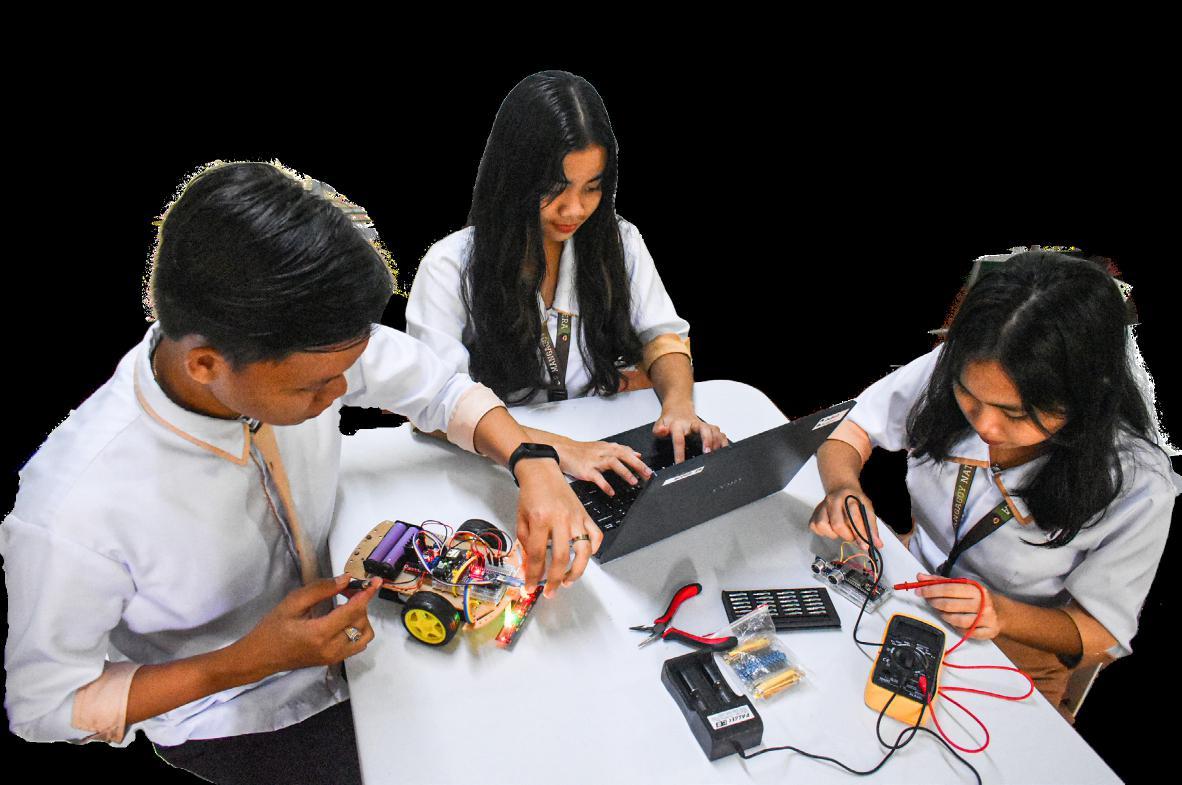
The growing demand for charcoal has led to massive deforestation, endangering ecosystems and accelerating climate change. Traditional charcoal production involves cutting down millions of trees annually, worsening soil erosion, decreasing carbon sequestration, and threatening biodiversity. But there is a better, sustainable alternative that people should use—coconut charcoal. According to the Food and Agriculture Organization (FAO), around 50 million tons of wood charcoal are produced globally each year, with a significant portion coming from illegally felled trees. This practice contributes to deforestation, which causes 20% of global carbon emissions. Furthermore, wood charcoal burns inefficiently, releasing more toxic pollutants into the air. Unlike wood-based charcoal, coconut charcoal
is made from discarded coconut shells, making it a waste-to-resource product. The coconut industry produces over 61 million tons of coconuts annually, providing an abundant supply of raw materials without harming forests.
Producing coconut charcoal reduces landfill waste and prevents further deforestation. It also burns cleaner, emitting up to 50% less carbon monoxide than wood charcoal. Coconut charcoal burns longer and hotter, making it ideal for cooking, industrial heating, and power generation while reducing dependence on fossil fuels.
As to medicinal benefits, activated coconut charcoal is a proven detoxifying agent, used in hospitals for poison treatment and in cosmetic and pharmaceutical products. While its production creates jobs for farmers and entrepreneurs,
generating millions in export revenue. The choice is clear—coconut charcoal protects forests, promotes health, generates income, and secures a sustainable future. It’s time to shift towards this greener alternative and put an end to destructive deforestation. The future of energy is not in cutting trees, but in utilizing waste responsibly. $8.37b

Photo by: Daniela Jacinth C. Cruz
Photo from: FREEPIK
JANINE P. POLINA
AARON M. FERNANDEZ
Photo by: Precious Mary B. Superio
harvest is always green
CARRYL MAE O. IBANEZ
The value of global charcoal market in 2024. Source: Virtue Market Research
sCI-TECH EDITORIAL Art by: Donna Claire B. Cabillas
JANINE P. POLINA
sCI-TECH NEWS
Photo by: Brenth Daryll P. Mozo
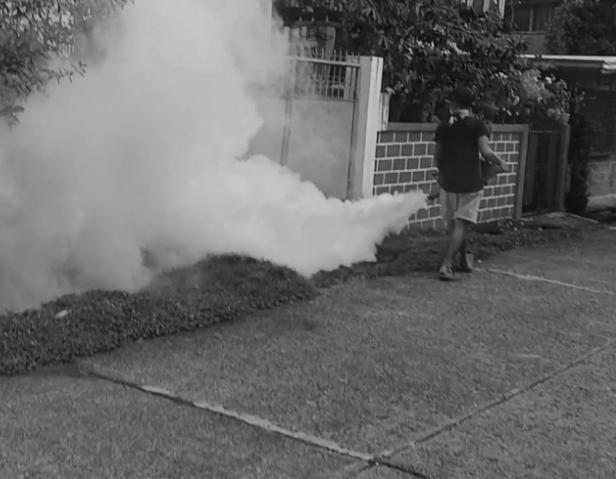
John Bosco declared a ‘Dengue Zone’ as cases surge by 28%
MANGAGOY, Bislig City—The fight against dengue fever escalates as the City Health Office designates John Bosco District as a dengue zone following a surge in cases from 15% last year to 28% in 2024. In response, fogging operations were conducted on October 11-12, 2024, targeting mosquito breeding sites. However, health experts warn that fogging alone is not enough. The City Health Office emphasizes eliminating stagnant water, using insect repellents, wearing protective clothing, and seeking early medical consultation to prevent severe dengue.
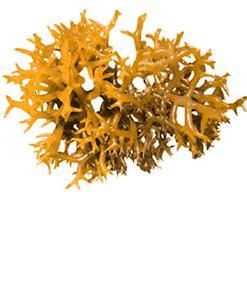
Seaweeds of countless dreams
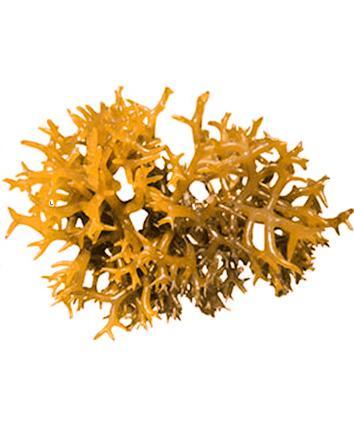

Dr. Adrian Tan of Andres Soriano Memorial Hospital stressed the role of prevention, advising parents to boost children’s immunity through proper nutrition. “A strong immune system is the body’s first line of defense,” Dr. Tan stated, urging proactive measures against the mosquito-borne illness. Dengue, transmitted by Aedes mosquitoes, presents symptoms such as high fever, rash, nausea, vomiting, and severe body pain. If untreated, it can lead to severe dengue, marked by nosebleeds, vomiting blood, or extreme fatigue.
Dr. Tan warns that seeking medical help within 24 to 48 hours of symptom onset can be life-saving.
Adding to the concern, dengue has four strains, meaning recovering from one does not provide immunity to the others. “This is why continued vigilance is critical,” Dr. Tan explained. The Department of Health (DOH) reports a 40,000-case increase nationwide this year compared to 2023. While dengue-related deaths have slightly decreased from 421 to 396, authorities stress that sustained prevention and early detection remain crucial in controlling the outbreak.
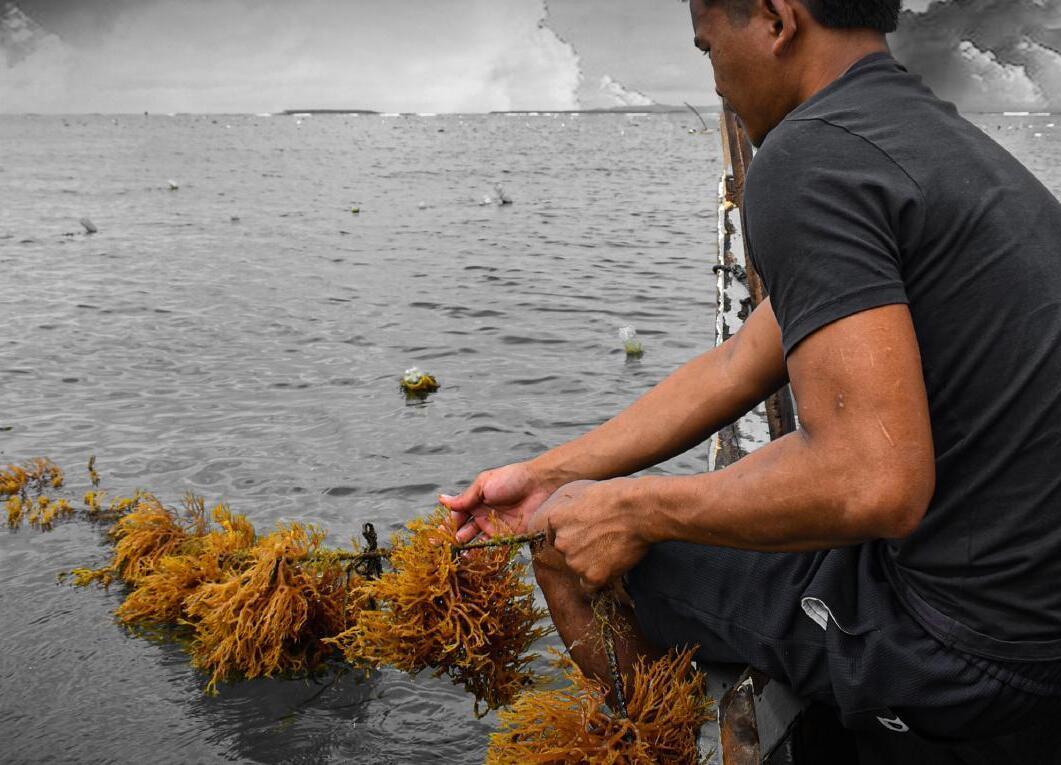

Tidman, the jewel of Hinatuan in Surigao del Sur, stretches along the coast like a welcoming embrace, its shores alive with the dance of vibrant green seaweeds. A serene haven, it lures visitors from around the globe, inviting them to explore the hidden treasures beneath its crystal-clear waters. Dr. Jason S. Yuen, a marine science researcher in the Philippines, has played a key role in exploring the uses of seaweeds like Caulerpa lentillifera in bioplastics, food, and medicine. His research is part of a larger movement examining seaweed as a raw material for biodegradable plastics, an ecofriendlier alternative to petroleum-based plastics.
Seaweeds come in many varieties, but in Tidman’s seaweed plantation, red algae and green sea lettuce dominate. Ulva lactuca, the green sea lettuce, is commonly used in salads,
The banana blossom, a vibrant teardrop-shaped flower from the end of a banana cluster, has long been a staple in Bisliganon cuisine and is now gaining recognition for its impressive health benefits. Research shows that banana blossoms are nutrientdense, rich in fiber, antioxidants, and essential vitamins like A, C, and E, as well as minerals such as magnesium, potassium, and iron. These nutrients contribute to better immunity, higher energy levels, and overall wellness.
sushi, and soups. With its mild, slightly salty taste and crisp texture, it’s a fresh addition to any dish. Yuen explained that red algae, such as Eucheuma and Gracilaria, are key seaweeds used in bioplastic production. Rich in carrageenan and agar—polysaccharides essential for biodegradable plastics—these seaweeds are valuable for creating sustainable plastic alternatives. Seaweed-based bioplastics stand out for being renewable, compostable, and reducing reliance on harmful petroleum-based plastics. Innovations in this field are gaining traction as industries seek greener solutions to combat plastic pollution.
Kathleen Mary Drew-Baker, fondly known as the “Mother of the Sea” in Japan, made a groundbreaking discovery by unraveling the life cycle of Porphyra (nori). Her work
revolutionized seaweed cultivation, providing a stable foundation for the livelihoods of Japanese seaweed farmers. Her research gained widespread acclaim and was later adopted by Filipinos, paving the way for highly sustainable seaweed cultivation in the Philippines. Today, seaweed flourishes effortlessly in the shallow waters of Surigao del Sur, requiring neither fertilizers nor arable land. Its cultivation is highly resource-efficient, leaving a much smaller carbon footprint compared to traditional plastic production. Drew-Baker’s groundbreaking work not only transformed global seaweed farming but also inspired countless seaweed growers, fueling their dreams of better livelihoods and fostering the sustainable growth of their communities. That is how the locales in Tidman benefit from the golden branches of dream weavers.
Lemon Grass: A potential insect repellent
The Grade 12 Science, Technology, Engineering, and Mathematics (STEM) students of Mangagoy National High School have recently conducted a Science Investigatory Project investigating lemongrass, a widely available and inexpensive plant, as a natural alternative to synthetic insect repellents.
Lemon grass contains citronella, a compound known for its insect-repellent properties, making it a promising candidate for natural pest control. Their project not only promotes environmental sustainability by utilizing a natural and renewable resource but also addresses community health concerns by offering a safer alternative to chemical insect repellents. It further empowers students to explore innovative solutions for pressing societal issues.
Based on their abstract, the investigatory project aims to evaluate the effectiveness of lemongrass (Cymbopogon citratus) as a natural insect repellent. Lemongrass, known for its high citronella content and aromatic properties, has been traditionally used as a mosquito deterrent in various cultures. With the increasing need for eco-friendly and chemical-free insect repellents, this study seeks to validate lemongrass extract’s efficacy in repelling common insects, such as mosquitoes and flies, while offering a sustainable alternative to synthetic repellents. Extracts from lemongrass leaves were prepared using ethanol as the solvent, and their repellent properties were tested against live insects in controlled environments. The effectiveness of the extract was compared to a commercially available synthetic insect repellent, assessing factors such as the duration of repellency, percentage of insects repelled, and user safety. Phytochemical analysis confirmed the presence of citronella and other bioactive compounds responsible for the repellent effect.
Preliminary results indicate that lemongrass extract demonstrates significant repellent properties, comparable to synthetic repellents but without harmful side effects. The study highlights its potential as a cost-effective and sustainable solution for reducing insect-borne diseases and improving public health.
Lemongrass extract can serve as a sustainable and affordable insect repellent, reducing the reliance on synthetic chemical repellents and contributing to improved public health and environmental sustainability. Future studies may focus on optimizing extraction methods, developing commercial-grade formulations, and expanding its application to other insect species.
Notably, banana blossoms can help regulate blood sugar levels, benefiting individuals with diabetes or those seeking sustained energy throughout the day. Their fiber content and bioactive compounds support glucose metabolism. Additionally, the blossoms are valued for women’s health, as they combat anemia and are believed to balance hormones, easing symptoms of PMS, menstrual health issues, and menopause. Banana blossoms are also ecofriendly, reducing food waste as an edible byproduct of banana cultivation. With their hearty texture and neutral flavor, they make a popular meat substitute in vegan and vegetarian dishes, such as curries, salads, and plant-based alternatives like “banana blossom fish.”
In a world increasingly focused on healthy and sustainable eating, banana blossoms offer a nutritious, versatile, and environmentally conscious option that bridges tradition with modern culinary innovation.
Thriving along the coastal waters of Bislig City, mangroves are more than just trees—they are nature’s powerful defense against environmental threats. Planting these trees plays a crucial role in protecting coastal areas, benefiting both the environment and local communities.
Scientifically known as Rhizophora mangle, mangroves act as natural barriers that reduce coastal erosion and storm surges. Their extensive root systems stabilize the soil, preventing land loss due to rising sea levels. These forests also serve as carbon sinks, absorbing large amounts of carbon dioxide and helping combat climate change. Additionally, they provide essential breeding grounds for fish, crabs, and shrimp, supporting marine biodiversity.

According to Dr. Karen McKee, a wetland ecologist, mangrove forests protect coastal communities from natural disasters like typhoons and tsunamis by buffering strong waves. Studies
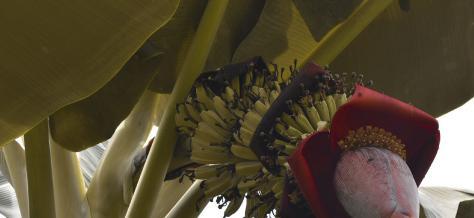

banana bLossom:
Hearty nutrient-packed superfood
reveal that areas with dense mangrove cover suffer less damage during extreme weather events than those without. McKee added that mangroves also sustain livelihoods by boosting fisheries and ecotourism.
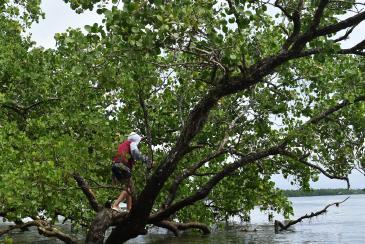


Fishermen benefit from healthier fish populations, while communities can develop sustainable tourism through mangrove boardwalks and kayaking. These forests also provide raw materials for timber, fuel, and medicinal products, strengthening local economies.
Dr. Daniel Alongi, a marine ecologist, highlights another crucial role of mangroves—water filtration. By trapping pollutants, mangrove forests prevent contamination in coastal waters, ensuring a healthier environment for both marine life and humans.
Mangrove planting is a vital strategy for both environmental conservation and economic resilience. Strengthening reforestation efforts and encouraging community participation can safeguard coastal regions for generations to come. Investing in mangroves today means protecting lives, livelihoods, and ecosystems tomorrow.
Photo by: Daniela Jacinth C. Cruz
JANINE P. POLINA
EDISON A. GAMBOA
BRENTH DARYLL P. MOZO
JANINE P. POLINA
CARRYL MAE O. IBANEZ
Photo by: Brenth Daryll P. Mozo
Art by: Donna Claire B. Cabillas
Photo by: Brenth Daryll P. Mozo



fRom HEaRTbREakER To LifEsavER
CARRYL MAE O. IBANEZ
Who could have imagined that the very soul responsible for a human’s heart ailment would become the one to heal it and ultimately save life in the process?
The ever-growing challenge of organ shortages has spurred the exploration of innovative solutions, with xenotransplantation— the transplantation of organs from one species to another—emerging as a promising frontier. Among the most notable advancements is the use of pig hearts as potential substitutes for human hearts.
Dr. Muhammad M. Mohiuddin, Program and Scientific Director of the Cardiac Xenotransplantation Program at the University of Maryland School of Medicine, has been pivotal in this research. His work highlights pigs as biologically compatible candidates for organ transplantation due to their anatomical similarities to humans, especially in heart size and function.
Recent breakthroughs in genetic engineering have brought this concept closer to reality. Scientists have developed methods to genetically modify pig hearts, eliminating or altering specific genes that could trigger immune rejection in humans. One significant advancement is the removal of alpha-gal, a sugar molecule on pig cells, which reduces the risk of organ rejection.
A landmark event in this field occurred in January 2022, when Dr. Bartley P. Griffith, a cardiothoracic surgeon at the University of Maryland Medical Center, successfully transplanted a genetically modified pig heart into a human patient. This breakthrough demonstrated the potential of pig-to-human heart transplants and marked a new chapter in medical science.
Despite these successes, challenges remain. Scientists continue to refine genetic modifications, enhance immunosuppressive therapies, and conduct further clinical trials. If these efforts succeed, pig hearts could offer a life-saving alternative to thousands of patients waiting for heart transplants. As science advances and ethical considerations evolve, the potential of pig hearts underscores the ongoing quest for solutions to humanity’s most pressing medical challenges. With continued innovation and collaboration, the dream of a future where no one dies waiting for a heart transplant could soon become a reality.


transforms life into a far more complex and demanding reality for both humanity and the natural world. According to research, these tireless bees are responsible for pollinating 70% of the world’s crops, including fruits, vegetables, and nuts. Without them, global food production would fall, leading to skyrocketing prices and a monotonous diet reliant on wind-pollinated staples like rice, wheat, and corn. Entire ecosystems would falter as wildflowers vanish, reducing habitats for countless species and disrupting the balance of biodiversity.


Dr. Neal Williams of the University of California has shown how habitat restoration, like planting wildflowers and preserving landscape, can sustain pollinator populations and boost crop yields. His strategies provide a sustainable path for integrating pollinator-friendly practices into agriculture, ensuring a secure food supply while supporting biodiversity.
Similarly, Dr. Kerrie A. Wilson highlights bees’ vital role in ecosystem services. Her research emphasizes how conservation efforts, such as protecting native habitats and mitigating climate change, are critical for pollinator survival and broader environmental resilience. Wilson emphasized the economic stakes are enormous. Pollination services are valued at hundreds of billions of dollars annually. Without bees, rural communities reliant on agriculture would face
devastating losses, worsening poverty, and food insecurity.
Beyond economics, bees are cultural icons of hard work and harmony. Without them, traditions and art inspired by their industriousness would fade, and vibrant gardens and landscapes would grow barren.
The ripple effects would extend beyond humans. Birds, small mammals, and insects that rely on pollinated plants would struggle to survive. Even carbon sequestration could falter as plant diversity declines, exacerbating climate change.
These scientists and their work underscore the critical role bees play in maintaining environmental balance and highlight the urgent need for conservation efforts. This sobering vision underscores the urgency of protecting bees. Their survival is intricately tied to the planet’s health, and safeguarding their future ensures the pliability of ecosystems and humanity alike.
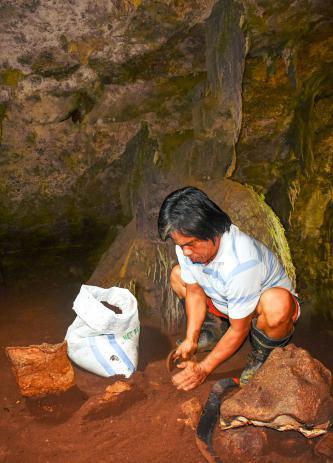
This versatility stems from its unique chemical composition, primarily consisting of triglycerides, including saturated and unsaturated fats like palmitic, oleic, and linoleic acids. Additionally, palm oil contains carotenoids and vitamin E compounds, which contribute to its long shelf life, hightemperature stability, and antioxidant properties.
Stephen, the leader of Palm Oil Experts, oversees an organic palm oil company dedicated to addressing challenges in lowincome communities. By producing organic palm oil, the company creates jobs and improves access to essential ingredients for food, promoting both economic growth and community welfare. Beyond food, palm oil’s semi-solid consistency makes it ideal for margarine, baked goods, and fried snacks. It is also used in personal care products, including soaps, shampoos, and lotions. Economically, palm oil supports millions of livelihoods, drives development, and reduces poverty. However, the rapid expansion of palm oil plantations has led to significant environmental concerns. Deforestation, habitat destruction, and biodiversity loss
threaten endangered species such as orangutans and tigers. To address these issues, Dr. Michele De Rosa, a collaborator at 2.-0 LCA Consultants, evaluates the environmental impacts of certified versus non-certified production methods, providing insights into more sustainable alternatives. Understanding the science and impacts of palm oil is crucial for creating sustainable farming practices and responsible consumption, ensuring its benefits while minimizing harm to
Imagine stepping into an underworld paradise where hundreds of birds hang like dark ornaments, their wings barely stirring. Occasionally, they flit gracefully, weaving echoes into a melody of life amidst shadows. Beneath them lies an unexpected treasure—guano, their droppings, which yield over a hundred sacks of organic fertilizer monthly. The Baldon family in Barangay San Antonio harnesses this natural resource to enrich their farmland, turning it into a fertile oasis.
According to David V. Marapao, an entomologist from Central Mindanao University, bat guano, produced by species like Myotis lucifugus, is rich in nitrogen, phosphorus, and potassium—essential nutrients for plant growth. Nitrogen promotes lush foliage, phosphorus strengthens roots and enhances flowering, and potassium boosts plant immunity, disease resistance, and fruit production.
Marapao emphasized that guano’s balanced nutrient profile makes it an effective organic soil amendment. It also contains beneficial microbes that enhance soil health and accelerate organic matter decomposition, significantly improving soil fertility. Farmers value its quick nutrient release and ability to condition the soil, improving aeration and water retention. He added that as a natural alternative to chemical fertilizers, guano is widely used in organic farming. It reduces reliance on synthetic fertilizers, which can harm the environment through runoff and pollution. Additionally, bats and seabirds, which also produce guano, help control pests, indirectly supporting agricultural ecosystems. This nutrient-rich fertilizer has revolutionized farming by boosting yields and promoting sustainable practices. However, its benefits come with responsibility. Sustainable guano management is crucial to protect the habitats of bats and seabirds, ensuring long-term environmental balance.
“It has been a decade since I discovered this cave filled with bat droppings. Over the years, I have gathered guano and stored it in sacks, using this organic fertilizer to nourish my 20-hectare farm. This farm has become our livelihood, providing for my family and ensuring our sustenance,” Mang Ben Baldon, landowner, said. From the depths of caves to flourishing farmlands, guano showcases the incredible synergy between nature and agriculture, offering a sustainable path to abundance.

CARRYL MAE O. IBANEZ
Photo by: Daniela Jacinth C. Cruz
Photo by: Daniela Jacinth C. Cruz
Photo from: FREEPIK
CARRYL MAE O. IBANEZ
Photo by: Precious Mary B. Superio
Photo by: Brenth Daryll P. Mozo
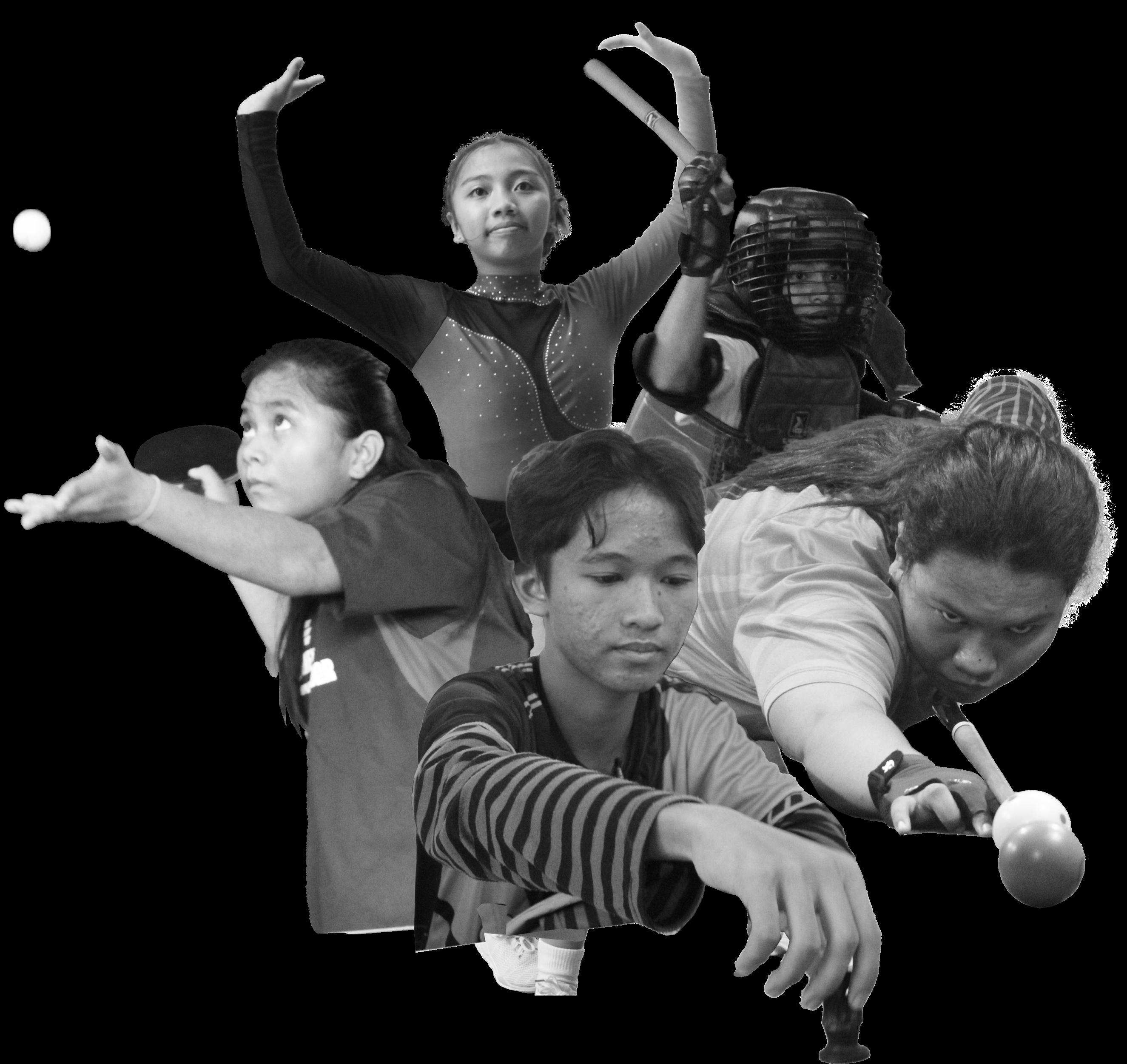
MsTaRk conTRasT
MNHS drops to 13th in Bislig Citylympics
Sparking calls for reform
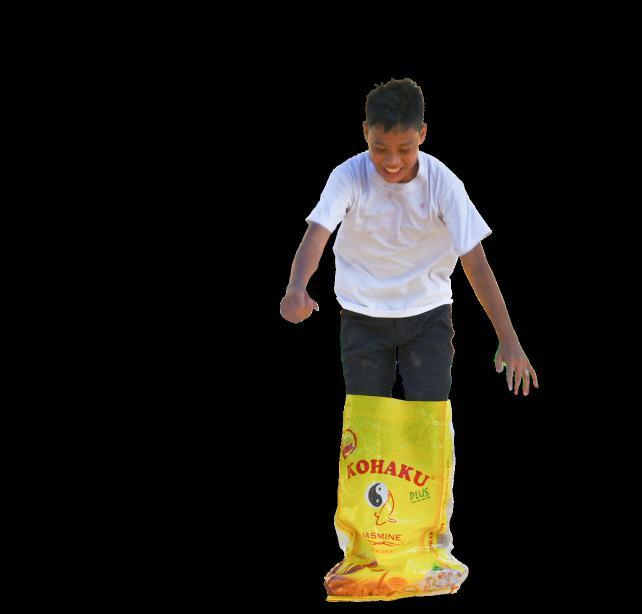
Laughter, cheers, and the rhythmic thud of sacks hitting the ground filled the air as students enthusiastically took part in Laro ng Lahi, a celebration of Filipino culture, tradition, and physical fitness. Held in honor of Buwan ng Wika, the event transported students back to a time when traditional games strengthened both bodies and bonds.
angagoy National High School (MNHS) faced a heartbreaking setback in this year’s Bislig Citylympics, bringing home only a single gold medal. The sharp decline from last year—when the school’s athletes secured seven golds, seven silvers, and eight bronzes—left students, parents, and faculty searching for answers.
The drop to 13th place out of 14 districts sent shockwaves through the school community. Student Supreme Government (SSLG) President Carryl Mae O. Ibanez voiced the concerns of many during a post-event review, asking, “Why did MNHS, with its promising athletes and dedicated teachers, struggle so much this year?”
For Wushu lead trainer Marwen Guias, the answer was clear: the athletes simply weren’t prepared. With academics taking priority, training sessions were often sidelined, leaving little time for proper conditioning. Adding to the challenge, MNHS lacks a dedicated gym, forcing student-athletes to train in open spaces, vulnerable to harsh weather conditions.
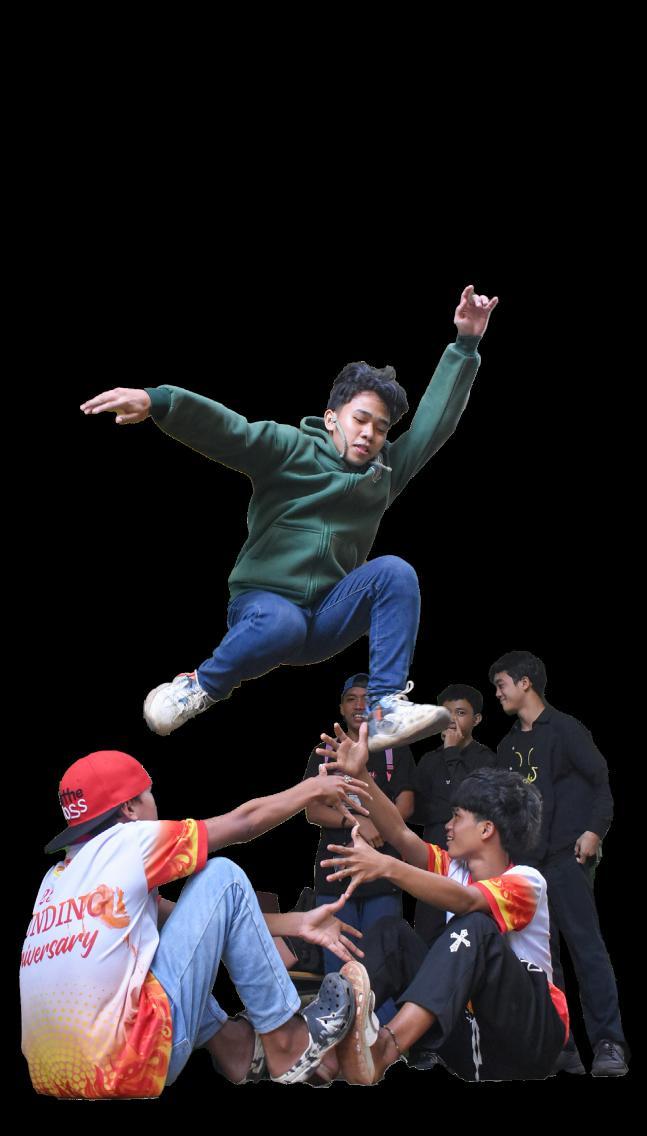
Financial struggles also played a role. With limited funding for sports equipment and expert trainers, MNHS athletes had to rent facilities and gear for events like billiards, table tennis, lawn tennis, swimming, and athletics competing at a disadvantage against better-funded schools.
Inexperience was another key factor. Many athletes were firsttime competitors, facing off against seasoned players from rival schools. Teacher-coaches, though dedicated, often found themselves coaching unfamiliar sports, further widening the gap between MNHS and its competitors.
Despite these setbacks, school officials remain optimistic. Principal
Dr. Teresa D. Buray acknowledged the challenges but emphasized the need for structured training programs, faculty development, and increased financial support. “Setbacks, while difficult, often pave the way for growth,” she said.
Sports coordinator Daphne Weisyl Feliscuzo echoed her sentiment, calling this year’s loss a wake-up call. She urged the school to see it as an opportunity to rebuild and come back stronger next year.
With the right adjustments, MNHS hopes to reclaim its place among the city’s top competitors, proving that resilience, not rankings, defines a champion.
LUKSONG TINIK
Soaring high with Filipino spirit
Amid the rhythmic chants and lively cheers, a group of young athletes prepared to take flight. Their eyes locked on the towering “tinik” before them— two pairs of feet stacked higher than ever. With hearts pounding and muscles tensed, they bent their knees, took a deep breath, and leaped.
On December 3, 2024, the vibrant atmosphere of Mangagoy National High
School’s PE Sports Fest came alive with the iconic Filipino game Luksong Tinik. This game, a true test of agility, teamwork, and strategy, is a celebration of Filipino resilience and spirit. Three teams—Grade 7 Fidelity, Generosity, and Perseverance, competed to outjump each other. From the start, Grade 7 Fidelity showed discipline and precision, selecting jumpers who balanced speed with control. By pacing themselves and focusing on timing, they cleared each level with grace, maintaining steady momentum. As the game intensified, the “tinik” reached impressive heights, and the pressure mounted. Every jump became more crucial, yet Grade 7 Fidelity remained focused. They leaned on mental toughness, trusting their technique and composure
One of the most anticipated activities of the day was the sack race, a lively competition that had students hopping their way to the finish line—balancing, stumbling, and laughing along the way. Each jump was not just a test of agility and speed but also a reminder of the joy in simplicity and play.
Beyond the thrill of the race, the event carried a deeper purpose: promoting teamwork, fitness, and cultural appreciation. Participants, dressed in oversized sacks, faced the challenge of maintaining balance while racing forward. With every determined leap, they showcased perseverance, determination, and camaraderie values deeply rooted in Filipino traditions. The school-wide competition saw students from different grade levels coming together in friendly rivalry, cheering each other on and embracing the true essence of sportsmanship. More than just a race, the event became a moment of unity, allowing students to relieve stress, share laughter, and appreciate the importance of movement and play.
While only one team claimed victory, everyone walked away a winner—not just in competition but in experience. The Laro ng Lahi event proved that traditional Filipino games are more than just childhood pastimes; they are a celebration of identity, a way to stay active, and a bridge connecting generations.
As the final sack race concluded and the cheers faded, one thing was clear: the spirit of Laro ng Lahi lived on, reminding everyone that fitness, fun, and Filipino heritage go hand in hand.identity.

rather than succumbing to the challenge’s intensity. In the final round, with the “tinik” towering at its highest, Grade 7 Fidelity soared past the ultimate obstacle, clinching the victory. Their triumph wasn’t just physical—it embodied the values of teamwork, resilience, and strategic execution. They won not only with their legs but with their minds and hearts. Beyond the competition, Luksong Tinik offers numerous health benefits. The game hones agility, coordination, and endurance, strengthening muscles and enhancing cardiovascular health. It also fosters social skills, teamwork, and problem-solving. In an age of digital distractions, Luksong Tinik remains a reminder of the importance of active play, cultural pride, and the spirit of bayanihan.






BRENTH DARYLL P. MOZO
JUMP
the MAPEH Fest, Luksong Tinik, on December 3, 2024.
Photo by: Precious Mary B. Superio
Source: Schools Division OfficeBislig City
STRIKEFORCE.
EDISON A. GAMBOA
T. Lingatong of Mangagoy National High School (MNHS) commenced an almostcomeback against Priya S. Ramos of Mangagoy 2A- District- Tabon Maximino Estrella National High School (TMENHS) but fails to grab the limelight, 2-3(8-11, 11-13, 13-11, 9-11,6-11) during the Table Tennis Women Secondary Bracket B, on November 27, 2024, at RAMZ Square, Mangagoy, Bislig City.
The dynamic match was a heart-punding spectacle as Lingatong managed to rise in the third and fourth, scoring two set points after getting blanked by Ramos in the first and second set.
Shone like there was no tomorrow, both sides started very aggressive exchanging several backspins and top smashes not until in the deadlocked second set score of 10-10, which provoked a deuce.
Unfortunately, Lingatong was unable to secure the first set and second set as Ramos asserted her dominance with
her unstoppable smashes that left Lingatong left-handed, 0-2(8-11, 11-13).
Driven with a persistent mindset and strong hope, Lingatong managed to seize control of the hill-to-hill 3rd and 4th sets where both sides prompted a deuce once again with a tied set score of 2-2.
The gripping battle unfolded in the final set where the atmosphere was intensified as the crowd could not wait to see who would come out victorious in this seesaw match. seemedLingatong
exhausted as she struggled to produce a score in the mark of 6-7 and with that, Ramos uncaged her iron- willed tomahawk serves that successfully dominated throughout the set, clinching the“Itvictory. was a great match. I am still happy that I fought until the very end. One thing is for sure: I gave my best effort, and that is enough because that’s how competition works—one person emerges victorious while the other learns valuable lessons,” Lingatong stated.
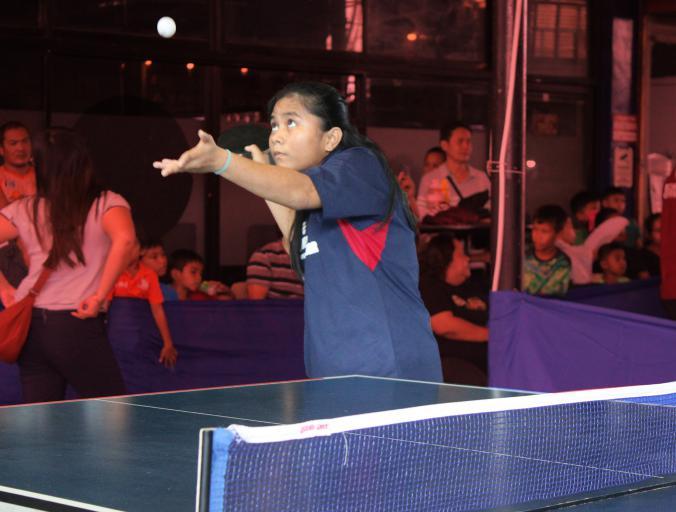
Wu-sHock

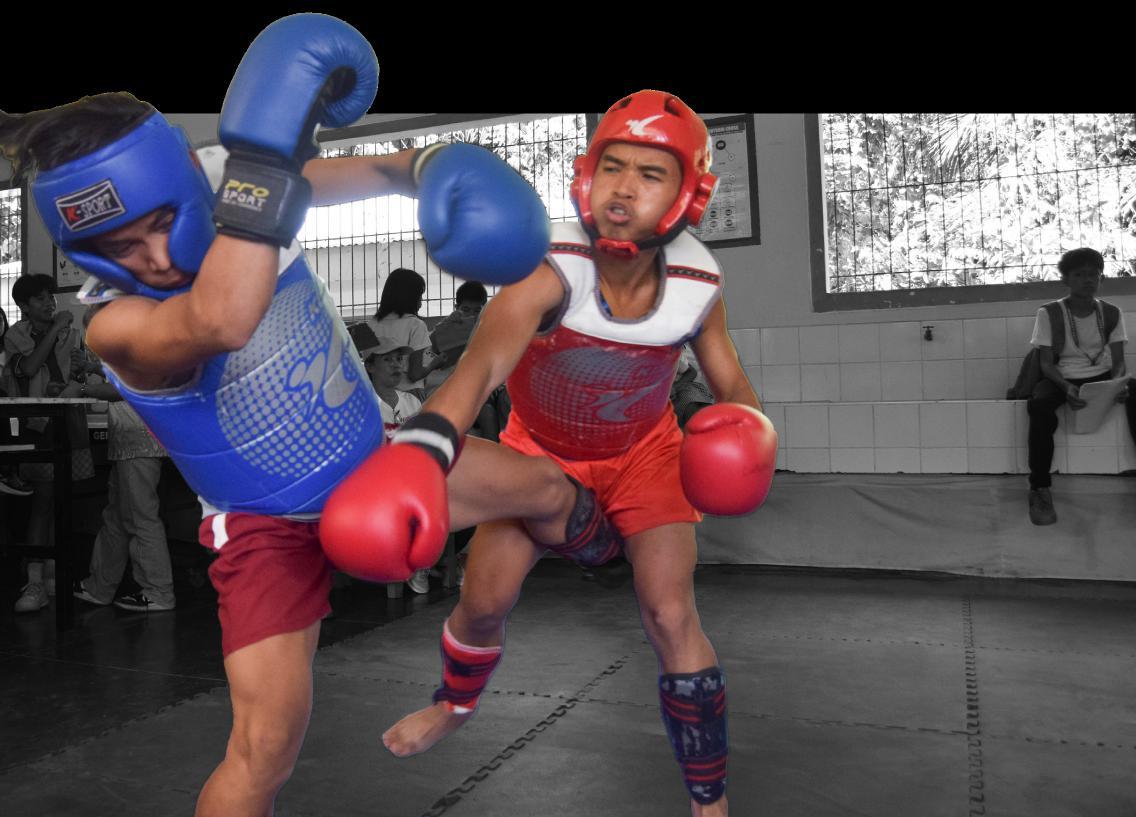
I’m postive that I will secure the gold medal in the upcoming Citylympics regarding to my performance in this exhibition match”
-Leojen D. Ay-ay
According to a study by the American Psychological Association (APA), 70% of young athletes learn discipline through sports. However, nearly half of them fail to carry the same discipline into their personal lives. If the discipline they exhibit in sports is not reflected at home, the positive impact of their efforts in sports may be limited.
Monetizing Passion
In the grand arena of life, he finds himself juggling two powerful worlds— academics and gaming. By day, he is a student armed with pens and paper, battling equations and deadlines. By night, he transforms into a content creator, harvesting clips and editing them into engaging videos. Balancing these contrasting realms, he hones his skills in both education and creativity, forging a path where intellect meets passion.
This is the everyday routine of a 17-year-old Student-Journalist, Student-Leader Student-Gamer, and Roblox YouTuber, Brenth Daryll P. Mozo. His obsession is to play a game in Roblox called “Murder Mystery 2” and create entertaining clips or montages about it.
“I started playing Roblox in the early summer of 2019 because I saw
my younger sister watching a lot of Roblox YouTubers and I aspired to be one of them. As time went on, I decided to upload my gameplay videos, and that’s how my YouTube career began,” Brenth said. His career even started to shine well when the dreadful pandemic started due to COVID-19 in 2019, and his YouTube Channel got monetized in 2020 where he started to earn money. However, it’s not all roses and candy canes every day for Brenth. He also struggles to balance his academics and career life.
Like a game with unpredictable twists, his journey hasn’t been easy especially when he stepped into Senior High School. As a student leader, a consistent honor student, and a Senior Journalist, schoolwork piles up like an unrelenting boss fight, and just when he thinks he has it under control, a surprise quiz or a major project strikes like a critical hit.
“At times, my mind is a battlefield, torn between fulfilling my leadership responsibilities, maintaining my academic


excellence, and finding time for my passion for recording game clips. The struggle to balance both is real—too much gaming and my grades could suffer; too much studying, and I risk losing a part of what drives me,” he added. But despite the chaos, he wouldn’t trade this journey for anything. The thrill of gaming fuels his creativity, while academics sharpen his discipline. The two worlds may clash at times, but he’s learned that balance is key. Like any skilled player, I adapt, strategize, and find ways to level up in both aspects of my life. For now, he presses forward— one stream, one exam, and one victory at a time. Because, at the end of the day, whether in the classroom or the gaming world, success isn’t solely about winning. It’s about the grind, the lessons learned, and the resilience to keep mastering the best of both worlds.
Red exalts over Blue, 2-0
MANGAGOY,
Bislig City- Red Armor Leojen D. Ay-ay shone like there was no tomorrow after dominating Blue Armor Romar Casal, 2-0, during the Exhibition match of Wushu Men’s 48kg Category, at Mangagoy National High School’s Old Science Laboratory, on October 25, 2024.
Due to the sizzling heat of the sun, the players faced difficulties in fighting as the matt they were playing on was so hot as a furnace, shifting the venue to the school’s old science laboratory. From the start, it was clear that both sides were in their best forms exchanging several points and errors not until in the mark of 3-2 where Red dominated Blue by uncaging his consecutive jabs and punches leaving blue unfazed.
Fueled with resurgence and determination, Blue tried to turn the tables but unfortunately, it wasn’t enough to overcome Red’s mastery. Red settled the first round with his right hook punches garnering a total tallied score of 30-7.
Under the crowdy atmosphere, Blue squandered an early 5-point after Red reasserted his superiority making Blue commit several out-of-bounds errors that gave Red an early start advantage.
Take Carlos Yulo, for instance— the first Filipino world champion gymnast—who is known for his dedication and determination. Yet, he recently faced issues within his household, indicating a lack of discipline at home. If the discipline and hard work he displays before audiences and during competitions are not translated into his interactions with his family, his success becomes meaningless. Research from Sports Science reveals that
Sneaked in a left uppercut, Red didn’t stand a chance after getting knocked out triggering his dizziness all throughout the match. Leojen Ay-ay eagerly finished the match as he rained several kicks and punches that tallied a huge number of points, 30-8.
Blue Armor said in an interview that he struggled with a few moves that they worked on in training, but sometimes in the heat of the moment, things didn’t go as planned. He learned a lot today, especially about areas he needs to improve.
“I think it was a combination of the training and staying focused. I’ve been working really hard with my coach on specific techniques, and I’m glad they paid off. Also, staying calm and focused was key in some of the tougher moments,” Leojen D. Ay-ay stated with a smile on his face.
young athletes who lack discipline at home are more likely to face familial relationship problems. In conclusion, discipline in sports is meaningless if it is not applied at home. A lack of discipline within the household reflects a larger issue—that the lessons learned in sports, such as discipline, unity, and honor, become like rusting gold, losing their true value if not lived out within one’s own family.

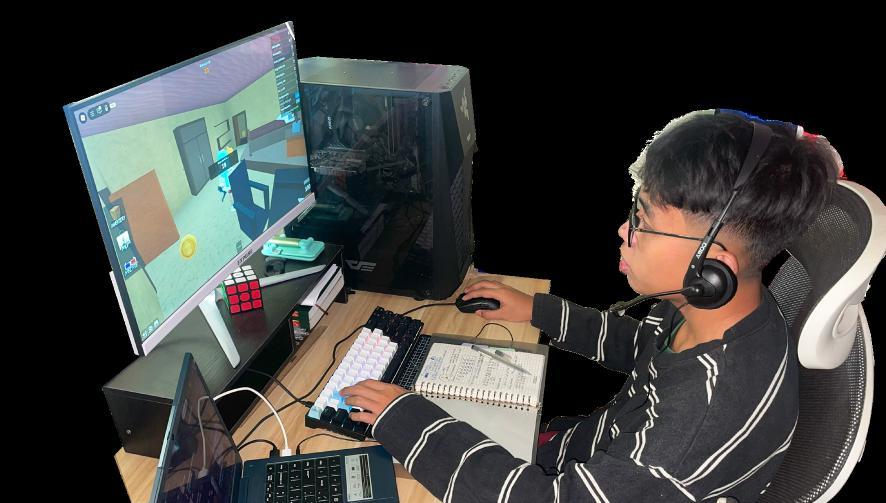
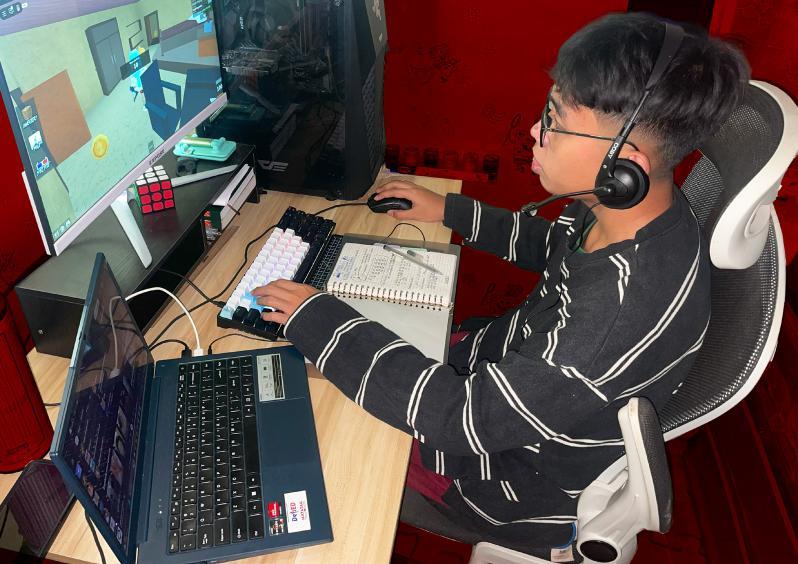
Photo
WENDEL R. MABALATAN
BRENTH DARYLL P. MOZO
KICKER. Red Armor Leojen D. Ay-ay dominates Blue Armor Romar Casal in an exhibition match of Wushu on October 25, 2024.
Photo by: Wendel R. Mabalatan
Art by: DONNA CLAIRE B. CABILLAS
sportseditorial:
SAMASHI MAELKITH S. JABAGAT

Blue Armor overthrows Red Armor, 2-1
MANGAGOY,
Bislig City- Battered with swift baton strikes and amazing stance, the Brisk Blue Armor Lord Razen Ybañez came away victorious after conquering Red Armor Justin C. Octal, during the Exhibition Game of Arnis Combative Men’s Category, at Mangagoy National High School‘s Open Quadrangle, on October 24, 2024.
Blue Armor uncaged several head strikes and chest stabs that outpaced Red Armor and garnered a total set score of 2-1.
From the start, it was clear that both sides were in their top forms exchanging points and errors not until Red committed a foul which gave Blue a significant advantage.
managed to turn the tables by executing numerous back and front hits, settling the first round 3-5.
Under the sizzling heat of the sun, the relentless Blue Armor executed two perfect straights to the crowns, tallying a secondround start advantage.
Since Blue deadlocked the set score, 1-1, a first-hit third-round win was decided.
With a speed and reaction time as quick as a cheetah, Blue Armor successfully dodged Red’s winning right eye poke and countered the attack that concluded the match, 3-5,5-3, 1-0.
Octal said in an interview that he’s having difficulty initiating as his hand just recently recovered due to cramps and he added that he learned a lot in the match in terms of when to attack and how to defend properly.
“’ I’m beyond happy for this victory because I can see that I’ve improved since the day we started our training and all I can say is good game to my opponent,” Blue Armor Lord Razen Ybañez stated with a smile of success.
On the other hand, Red Armor Octal said that he needs more time to train and come back stronger in the future.
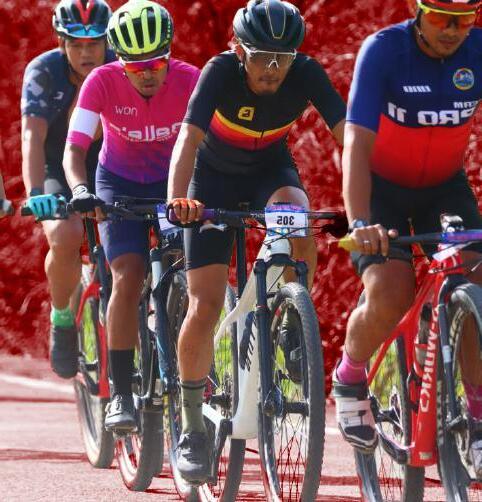
baLLsEyE
Giray
fails to defend title against Mante
November
I gave it my best shot, but today just wasn’t my day. This loss is a lesson—I’ll come back stronger as this is not yet my last year representing my school.”
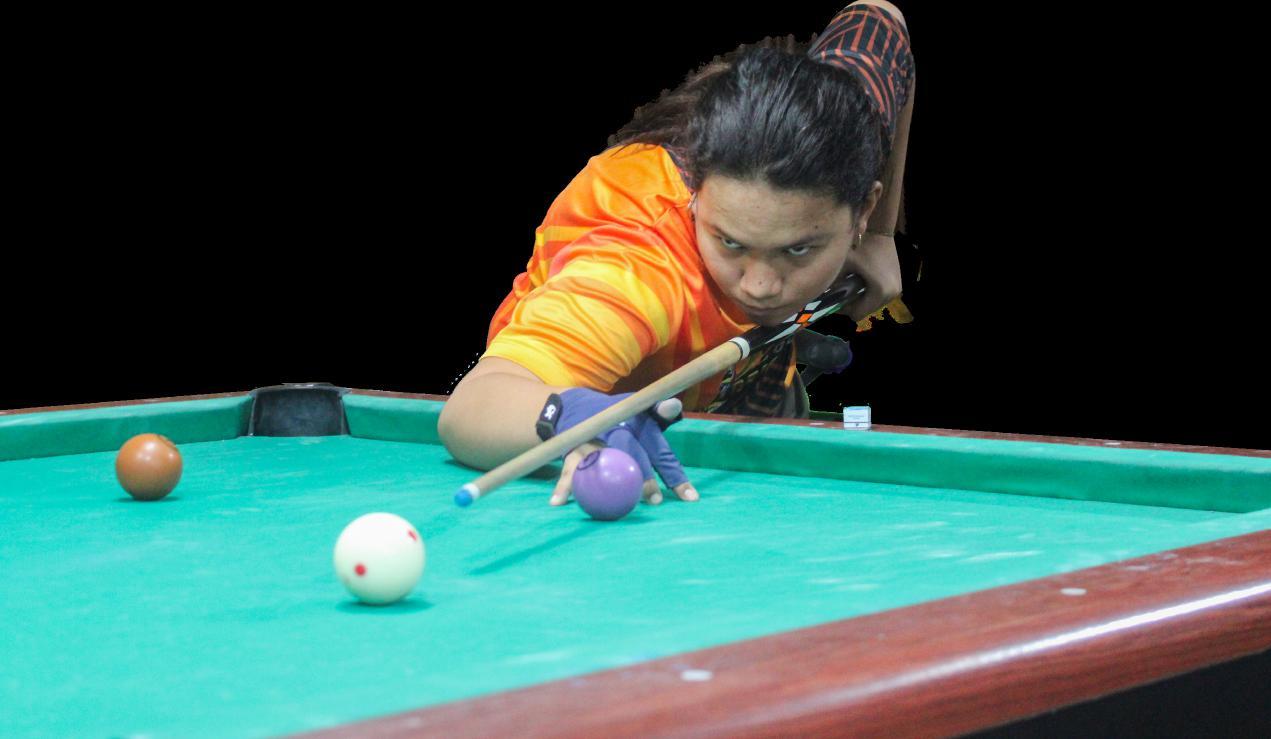
28, 2024 - Aira Jane D. Giray of the Mangagoy National High School (MNHS) under the Mangagoy 1 District fails to defend her 1- year championship title after kneeling down against the same foe she dethroned last year, Princess Julia Mante of Tabon Maximino Estrella National High School (TMENHS) of Mangagoy 2A District, during the Bislig Citylympics, Billiards 9-ball Women’s Secondary Category, held at Lucky Break Recreational Center, Barreda Street, Mangagoy.
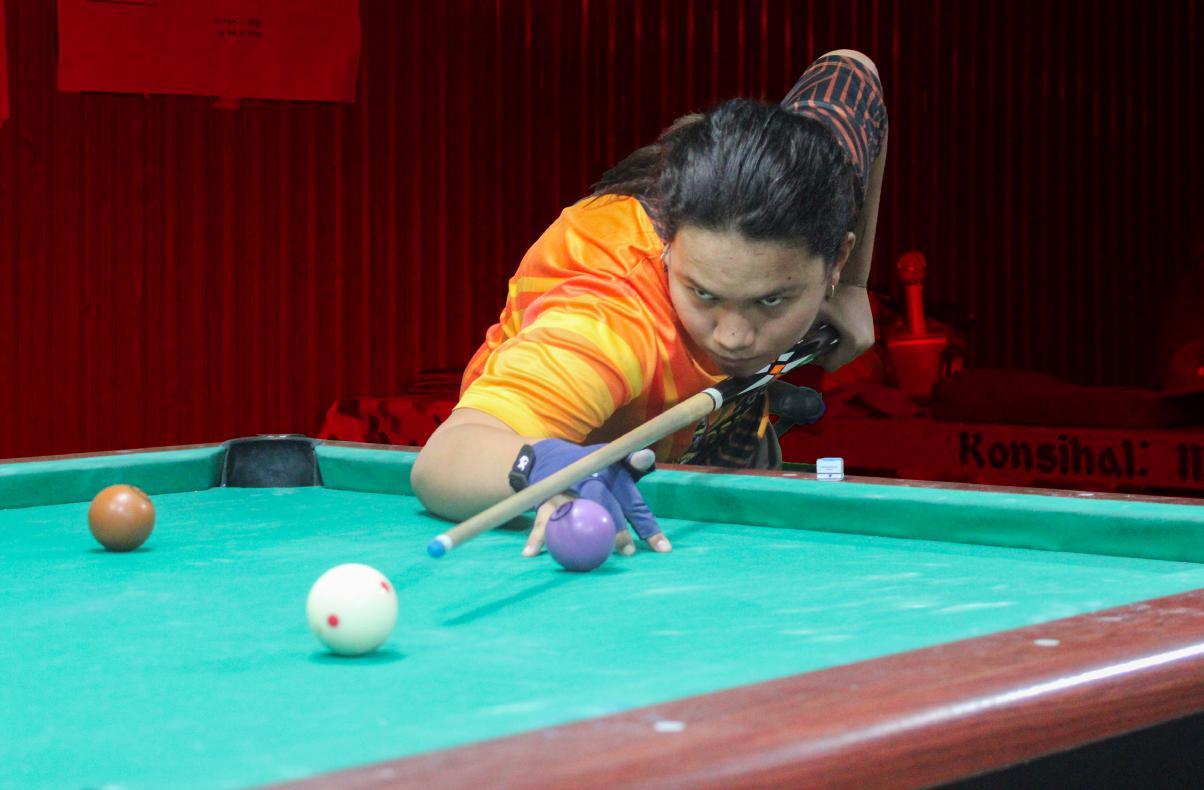
Princess Julia Mante has been the defending champion for two consecutive years since 2022. Last year, Giray managed to seize her crown; however, this year, Mante redeemed herself and clinched back the crown in a best of 8 match.
From the start, Giray was the first one to break the rack which gave Mante the open table, followed by Mante’s double combo shot and 4 balls sweep, finishing the first set in the favor of Mante, 0-1. Lightly regarded Giray and Mante intensified the second set as both of them failed to pot the last ball multiple times. Giray’s last hit failed and scratched giving Mante an opportunity to conclude the second set, 2-0.
Fueled with resurgence and determination, Giray tried to turn the tables with her bank shots and errors of Mante and successfully prevailed in the third set, 1-2. The critical moments occurred in the closely contested fourth and fifth sets, with both teams exchanging set points until the final set with a set point of 3-4 in favor of Mante. The nail-biting 7th set commenced with a table break coming from Giray with no in which gave the open table to Mante. Both sides cleaned up the balls slowly but precisely regardless of the nerve-wracking atmosphere not until the 9-ball fail by Mante. It was indeed a good angle for Giray to shoot the last ball and may
Air Nomads outsmart Fire Nation; bags gold in MLBB Tournament
The
continue to the final deadlock set but surprisingly, Giray choked on the corner pocket, leaving the cue ball and the last ball on a straight angle which Mante concluded the match, 3-5. Mante expressed her excitement about getting her crown back and having the opportunity to go to the Regionals. This has been her dream since she was in 7th grade, and she has been practicing a lot in preparation for this match.
“I feel sad because I’m unable to defend my title, but I also feel happy knowing that I did my best. I learned that you win sometimes and you lose sometimes,” Giray expressed.
Persistent Air Nomads overcame a jittery start to clinch the golden spot as they trounced the Fire Nation, 19-10, during the Mangagoy National High School’s Foundation Day, Mobile Legends: Bang Bang Tournament Championship, at MNHS’s E-room, on October 1, 2024.
Air Nomad Core’s do-or-die tower dive in the late game carried his teammates to a convincing victory, scoring a total score of seven kills, one death, and five assists.
From the start, it was clear that both teams were in their top forms, exerting their dominance in laning, jungles, and objectives, and also waiting for the perfect moment to execute a kill.
Lightly-regarded Air Nomads are facing difficulties as Fire Nation got more advantage in terms of gold, followed by first turtle retribution by their devious core, Nolan.
However, Air Nomads managed to break the curse and lift up their momentum as their mage, Vale unleashed his combo; Wind Blade, Wind Blow, and Windstorm, drawing first blood on Fire’s Mage and later on, their Marksman.
The match continued with both teams exchanging numerous kills and towers, until
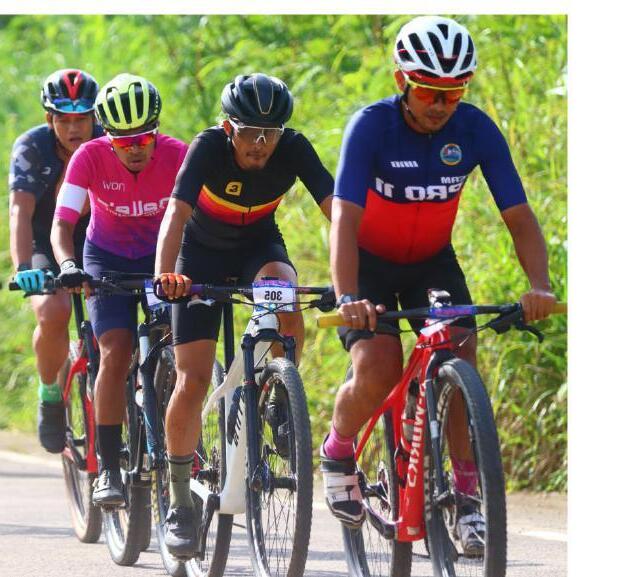
the Fire Nation made a critical mistake that led to their unexpected defeat.
Fueled by determination and resurgence, the Fire Nation attempted to outwit the Air Nomads by engaging in a risky lord contest within 12 minutes of the game, despite lacking an advantage.
Air Nomads’s Core took the Lord while also killing Nolan with Helcurt’s ‘Dark Night Falls’ followed by a risky tower dive at the enemy’s inhibitor turret, killing Vexana and Natan.
Fire Nation realized they could no longer defend their base considering their teammates’ resurrection time, resulting in the Air Nomads’ significant 2-1 victory.
“I’m truly honored to receive the MVP award. This victory means so much to me and our team. I want to thank my teammates for their incredible support and teamwork throughout the tournament,” MVP stated.




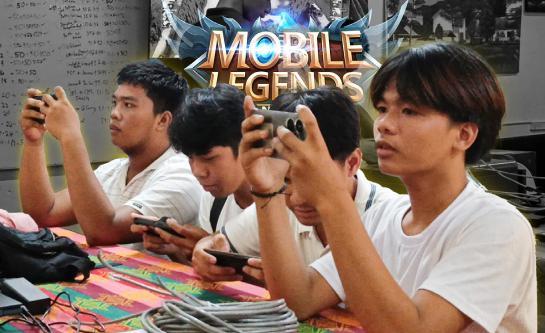


Padyak Turismo 2024 draws 230 cyclists to celebrate Bislig City’s 24th Charter Day
n celebration of Bislig City’s 24th Charter Day, the highly anticipated 20th Padyak Turismo Mountain Bike Competition took place on September 15, 2024, at the Bislig Baywalk in Poblacion. Organized by the Bislig City BikersEnthusiasts (BCBE) in collaboration with the City Government of Bislig through the City Tourism Division Office, the event attracted 230 participants from across Mindanao. Cyclists competed in various categories, including Open Elite, Ladies Open, Executive, and age-specific brackets, ranging from 14 years old and below to
50 and above. Riders traversed a challenging 40-kilometer route, which included both paved and rough roads and passed through barangays Comawas, Mone, Burboanan, Pamanlinan, and Coleto.
In the Open Elite category, Ken G. Abayabay emerged as the champion, followed by Reyman C. Gran in second place and Richard P. Abraham in third. For the 17 years old and below category, Neo Khenji E. Moyong secured the top spot, while Michael Angelo Paña and Ian Noel S. Gerasmio finished second and third, respectively. In the 18 to 29 years old category, John Xavier U. Portes claimed first place, Mark L. Salas came in second, and John Kent N. Aguilar finished third. Among the 30 to 39 years old participants, Erickson B. Barrera took first place, John Harold C.
Villanueva came in second, and Jhon A. Lapitag secured third. Nathaniel Clark B. Carisma dominated the 40 to 49 years old category, with Eric A. Placibe and Christian A. Aliansa finishing second and third, respectively.
In the 50 and above category, Glen M. Yap emerged victorious, followed by Joel F. Rojo in second and Boboy Tanjay in third. Meanwhile, in the Ladies Open category, Dianna Marie Costes claimed first place, with Chai M. Ortigoza and Anchelet B. Reyes taking the second and third spots. The winners from each category were awarded trophies, medals, and cash prizes, while fun ride participants and special awardees received cash rewards. The event showcased the cyclists’ determination, skill, and camaraderie while celebrating the vibrant culture
SCOPIC. Aira Jane Giray focuses on the 7-ball as she secured the third set during the Bislig Citylympics 2024, Billiards Women Category, on November 28, 2024.
Photo by: Brenth Daryll P. Mozo
VICTORY!. Air Nomads outwit the Fire Nation during the Mobile Legends: Bang Bang Tournament on October 1, 2024.
Photo by: Precious Mary B. Superio
-Aira Jane D. Giray
BRENTH DARYLL P. MOZO
numbers
Bislig City. It was a fitting
AARON M. FERNANDEZ
CARRYL MAE O. IBAÑEZ
WENDEL R. MABALATAN

Segongan shines bright in Aerobic Gymnastics Finals
theSummit
SPORTS
Mangagoy 1 Rainbow Warriors’ Ann Segongan bags the the bronze medal after showcasing her dazzling techniques in the Aerobic Gymnastics, Individual Secondary Girls Category, held at the Bislig Citylympics, hosted at Tabon Maximino Estrella National High School’s Quadrangle on November 27, 2024.
From the moment Segongan entered the floor, her skill and determination to claim the gold medal were evident. She immediately displayed mesmerizing and impressive dance moves, along with her flexibility showcased through the graceful bending of her body during the routine.
Despite the challenging conditions, Segongan managed to execute powerful cartwheels and demonstrated prowess in her spins, planking, and front walks, followed by an impressive flip. Due to her relentless effort and unwavering self-confidence, Segongan clinched third place.
“I am happy because I was able to do it despite my equally skilled opponents. I am thankful to my coach, Ma’am Maricar Samaco, who always supports me, as well as to my family. In the upcoming Regional Meet, I will do my best to win,” Segongan emphasized. Furthermore, Segongan’s teammates, including Hanna Alexa Paco, will represent

DepEd, LGU, BLGU collaboration ignites Citylympics 2024
Bislig City Mayor Florencio C. Garay, Vice Mayor Atty. Alfredo J. Carmelo, OIC-Schools Division
Superintendent Gemma A. De Paz, and Barangay Captains from all barangays formally launched the Citylympics 2024 during the opening ceremony at the Bislig City Cultural and Sports Center on November 25, 2024.
Superintendent De Paz officially opened the event, emphasizing the dedication of the 2,929 participating athletes from the Bislig City Division. “Let us celebrate our athletes who have trained tirelessly to achieve greatness,” she declared.
The ceremony featured a symbolic hoisting of banners, where PSDS leaders, School Heads, and Barangay Captains proudly raised their flags, embodying the spirit of sportsmanship and pride in their respective districts.
In his keynote address, Mayor Garay encouraged the athletes to strive for excellence and bring honor to their districts, expressing his vision of making Bislig City a champion in sports. “I want Bislig City to excel in every sports event,” he stated. To further inspire participants, Mayor Garay announced a consolation prize of 5,000 pesos for each participating delegation, a gesture aimed at motivating athletes as they prepare for the Palarong Pambansa 2025. The Citylympics 2024, running from November 25 to 29, serves as a stepping stone for athletes aiming to represent Bislig City Division in the upcoming Caraga Regional Athletics Games (CRAG) 2025.
invicTus Wa io

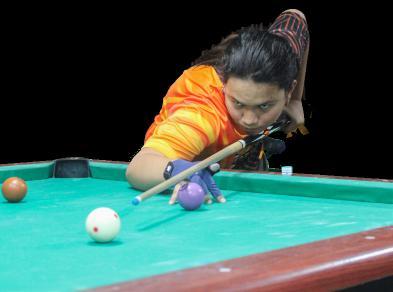
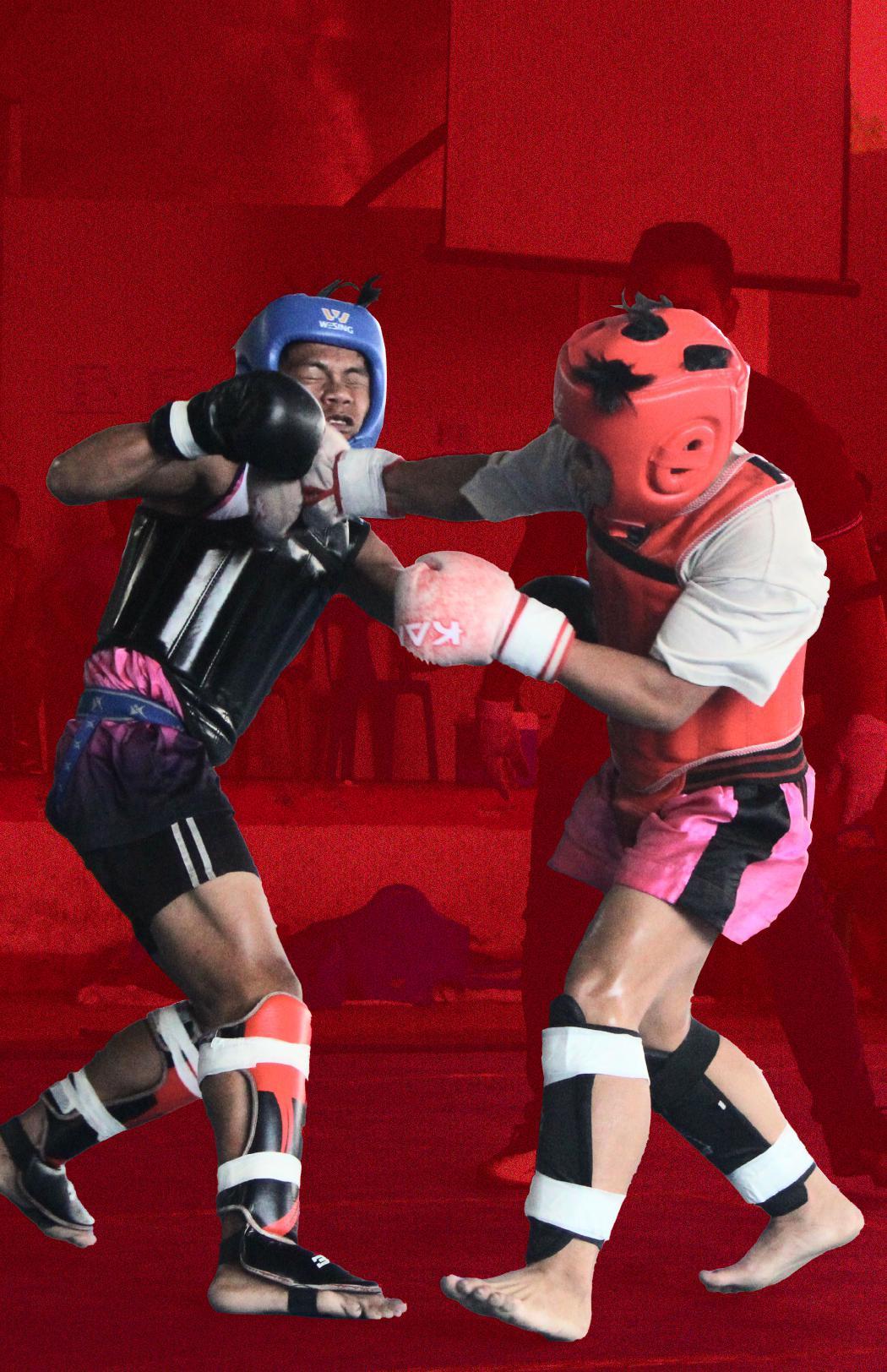
MANGAGOY,
Bislig City – Bombarded with devastating blows and impressive hook strikes, John Mark Villacite from Mangagoy National High School (MNHS) emerged victorious after defeating the Blue Armor, Michael Angelo Toyogon from Tabon Maximino Estrella National High School (TMENHS), in the Championship match of Wushu Sanda, 48kg Boys Category in the Division Sports Athletic Meet, held on November 3, 2024, at the Andres Soriano Colleges of Bislig (ASCB), with a score of 2-0 (2-1, 3-0).
With this impressive feat, Villacite extends his dominance with a three-win streak at the Division level since 2022 and a two-win streak at the Regional level.
From the opening bell, Villacite wasted no time asserting dominance. He aggressively launched a series of rapid straight punches and forceful sidekicks, keeping Toyogon on the defensive.
Despite Villacite’s overwhelming attacks, Toyogon showcased his resilience by countering with well-timed defensive moves and counterattacks. However, Villacite’s relentless pounding proved too much, earning him the first round in a closely contested battle.
As the second round commenced, Toyogon
attempted to change his approach, adopting a more defensive stance while looking for openings to strike back. However, Villacite remained unfazed, reading his opponent’s movements and responding with precision. He landed powerful uppercuts, back kicks, and a flurry of strikes that pushed Toyogon further onto the backfoot. The decisive moment came when Villacite executed two consecutive takedowns, securing his dominance in the match and leaving Toyogon struggling to regainWithmomentum. the clock ticking down, Toyogon attempted a final push to recover, but the toll of Villacite’s relentless offense had already drained his energy. Despite his valiant efforts, he
could not mount a comeback, allowing Villacite to claim victory with a clean 2-0 sweep. With this triumph, Villacite not only won the gold medal but also secured his spot in the upcoming Caraga Regional Athletic Meet (CRAM), where he will face tougher opponents from across the region.
“I’m happy because all my hard work from our trainings paid off, and I hope I can still win in the regional competition,” Villacite shared in an interview after the match. Meanwhile, Toyogon acknowledged his defeat but remained determined to come back stronger. “I will work harder in training so I can win next time and grab the gold medal,” he vowed.
make it up again to Palarong Pambansa!”
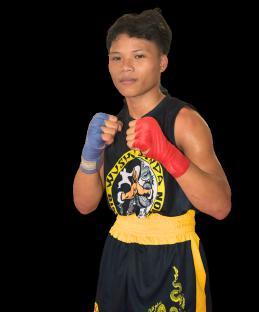



CARRYL MAE O. IBAÑEZ
DONNA CLAIRE B. CABILLAS
HOOK. Red Armor John Mark Villacite unleashes his staunch right hook punch against Blue Armor, Michael Angelo Toyogon during the Wushu
Mark Villacite
BEDAZZLED. Ann Segongan showcase her dazzling aerobics moves
in Aerobics Individual Category, on November 27, 2025, at Tabon Maximino
Estrella NHS’s Quadrangle.
Photo by: Brenth Daryll P. Mozo
BRENTH DARYLL P. MOZO
